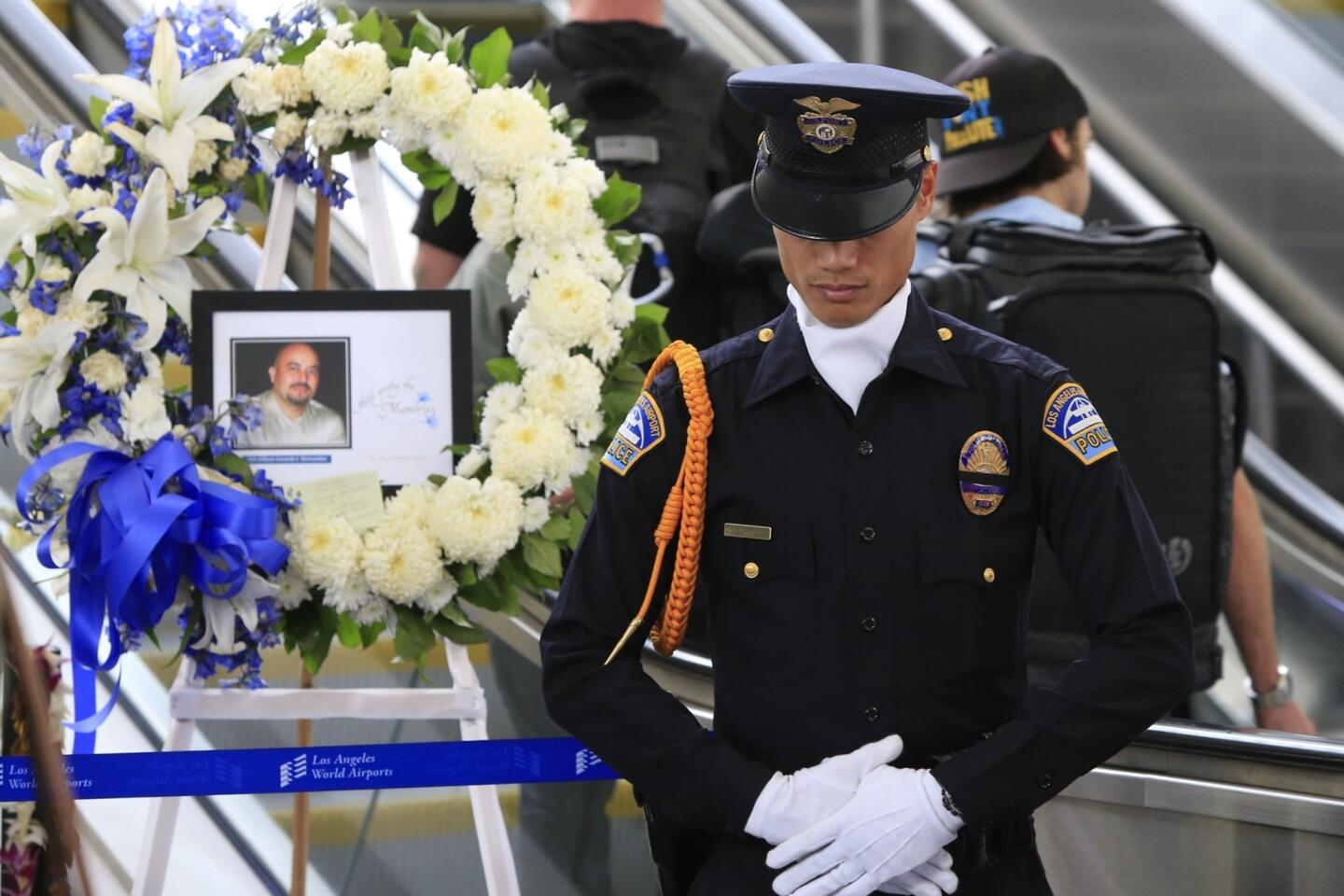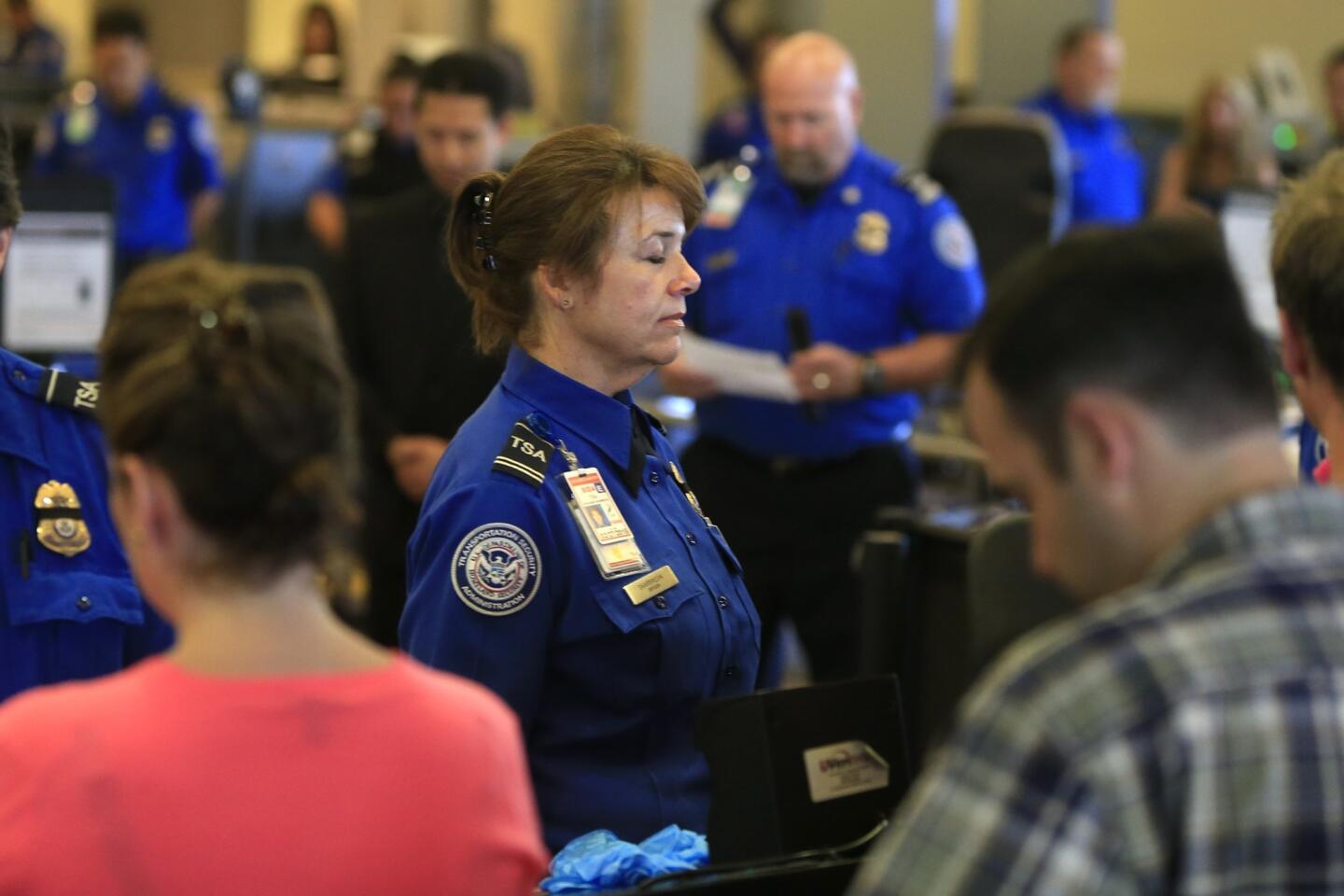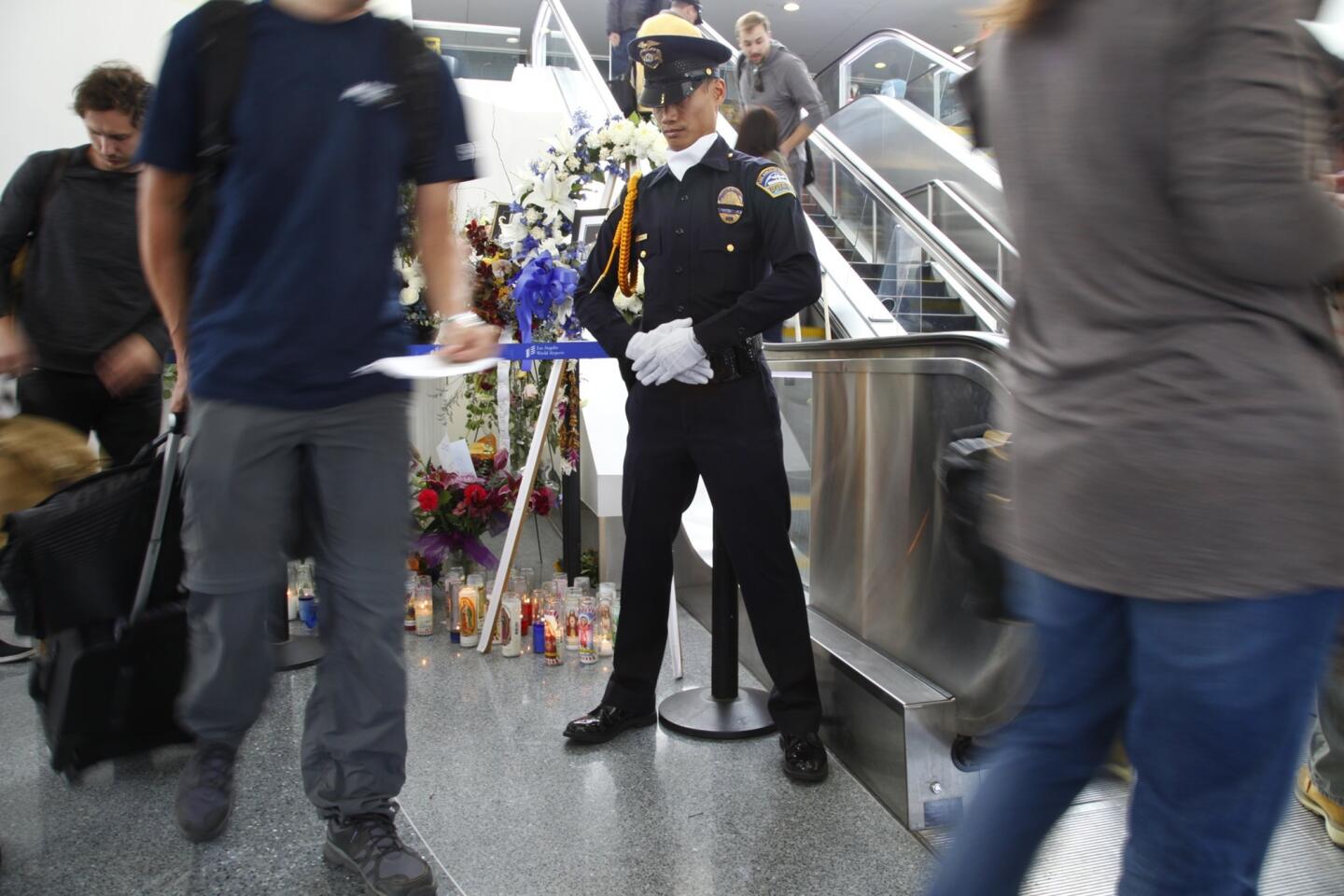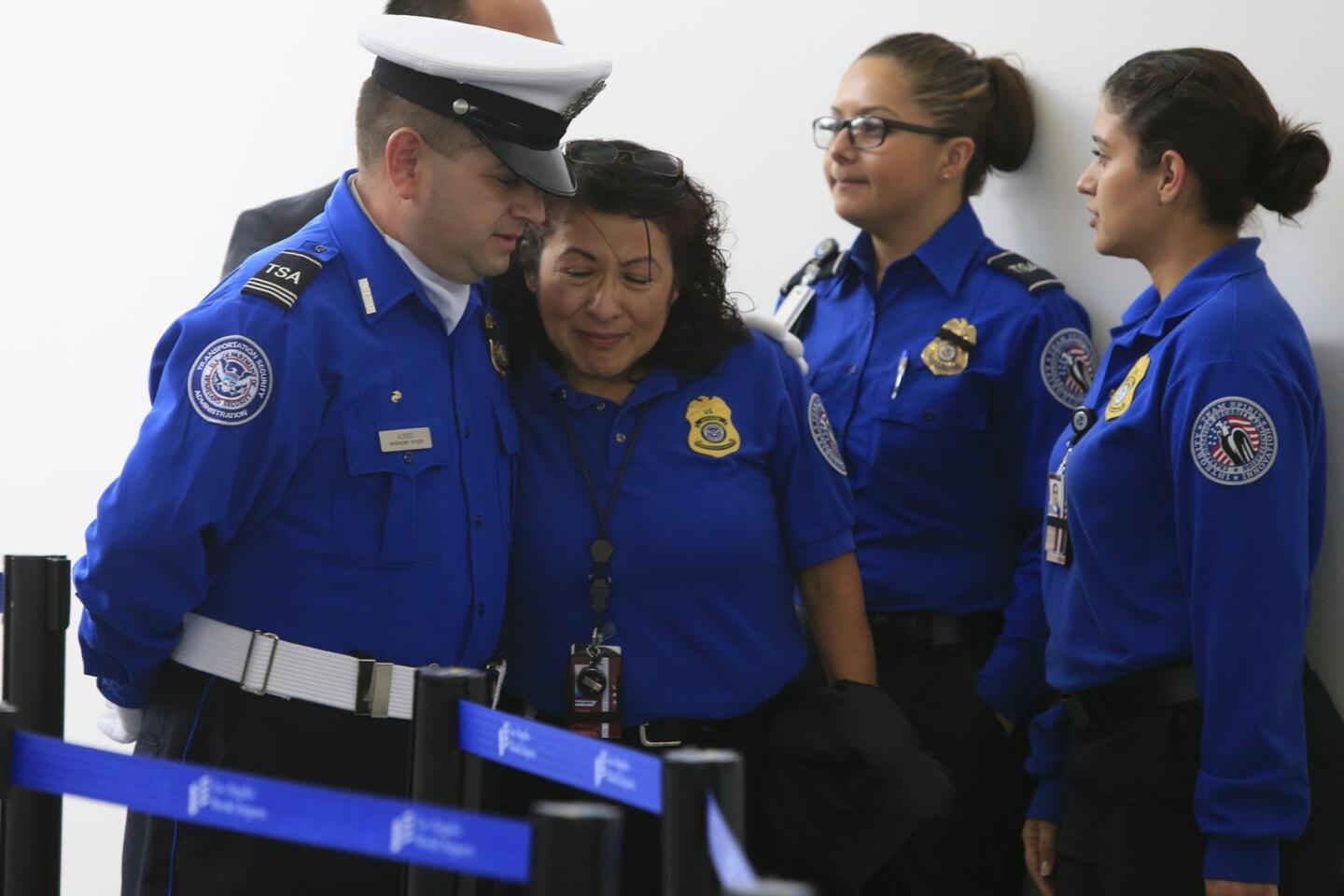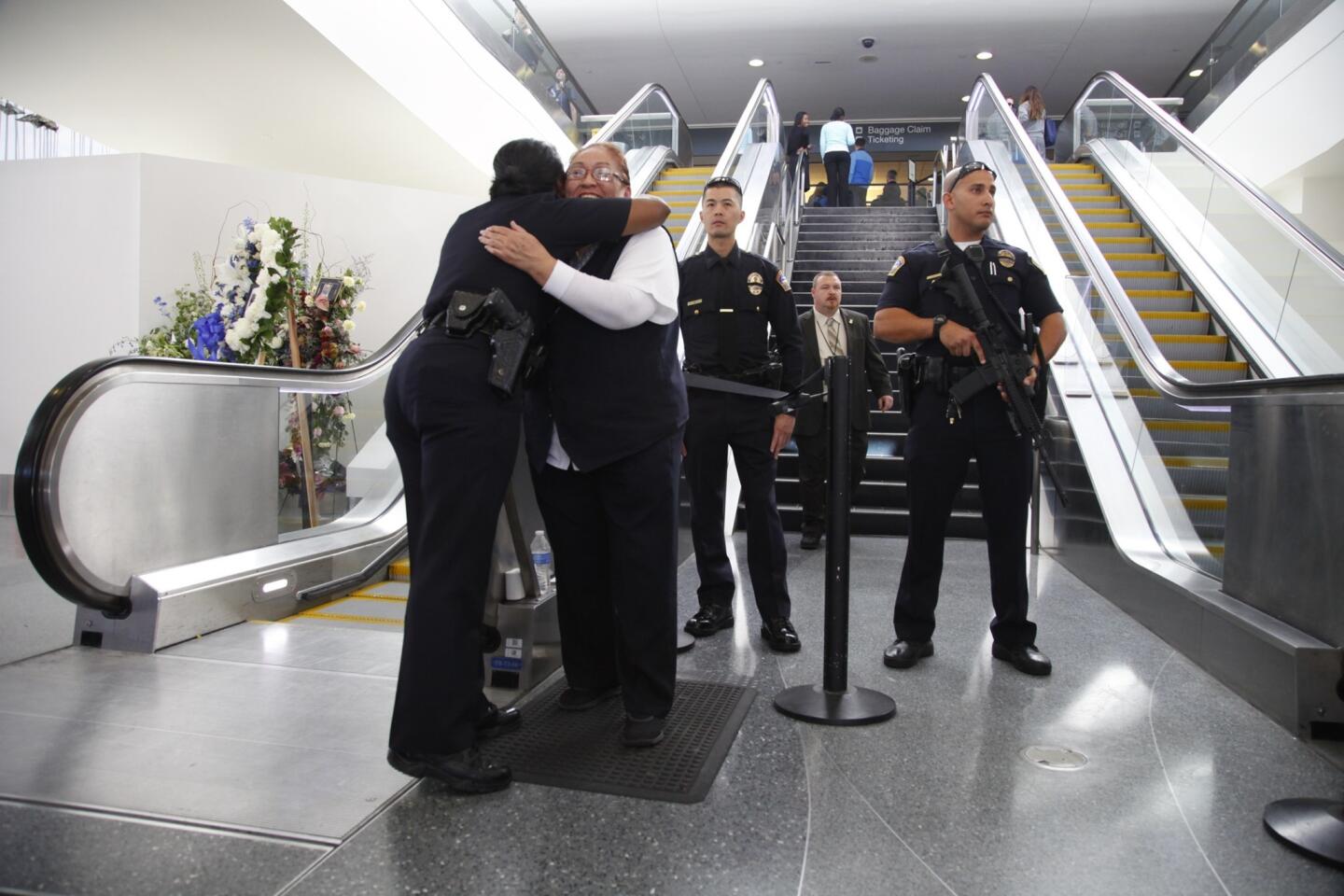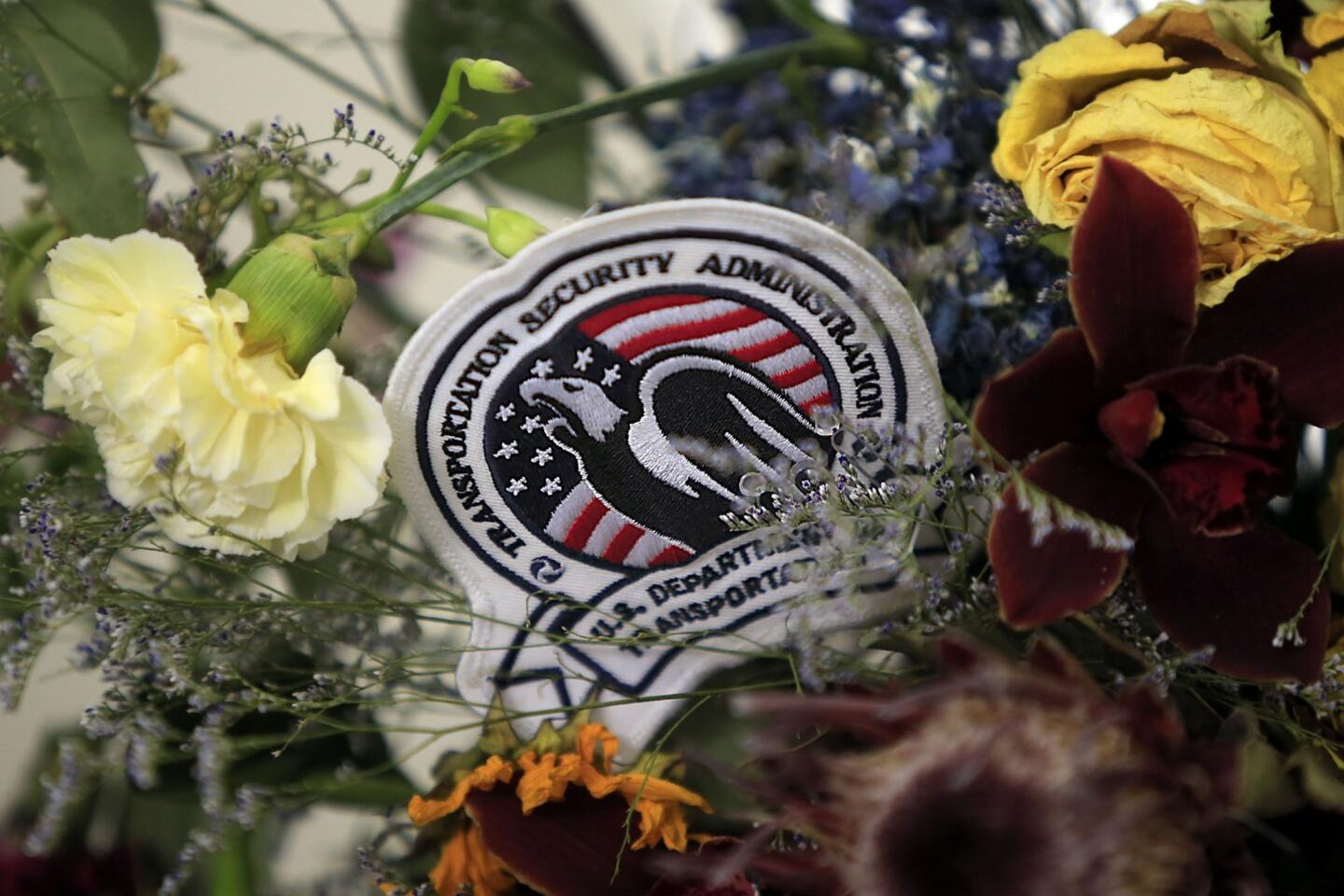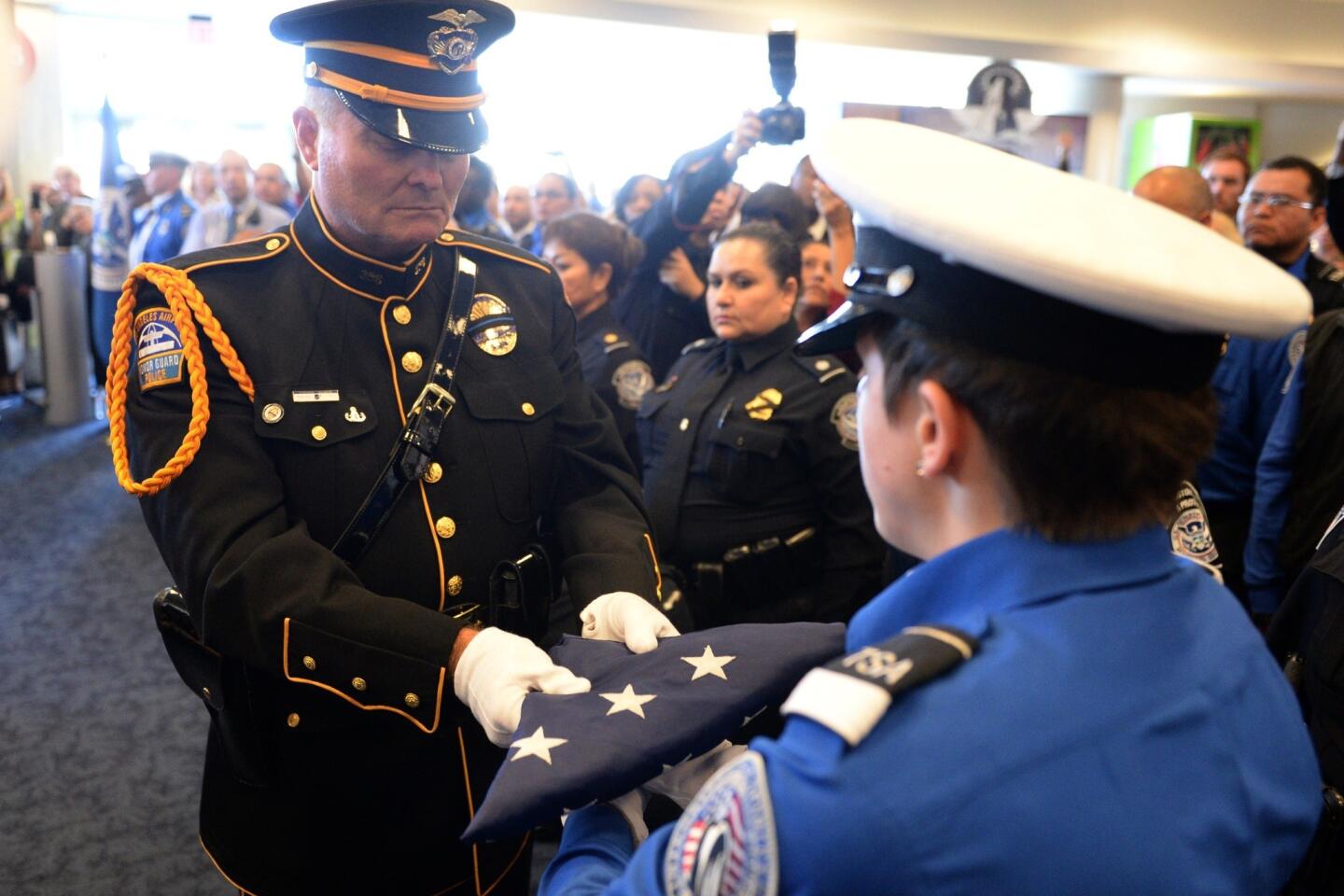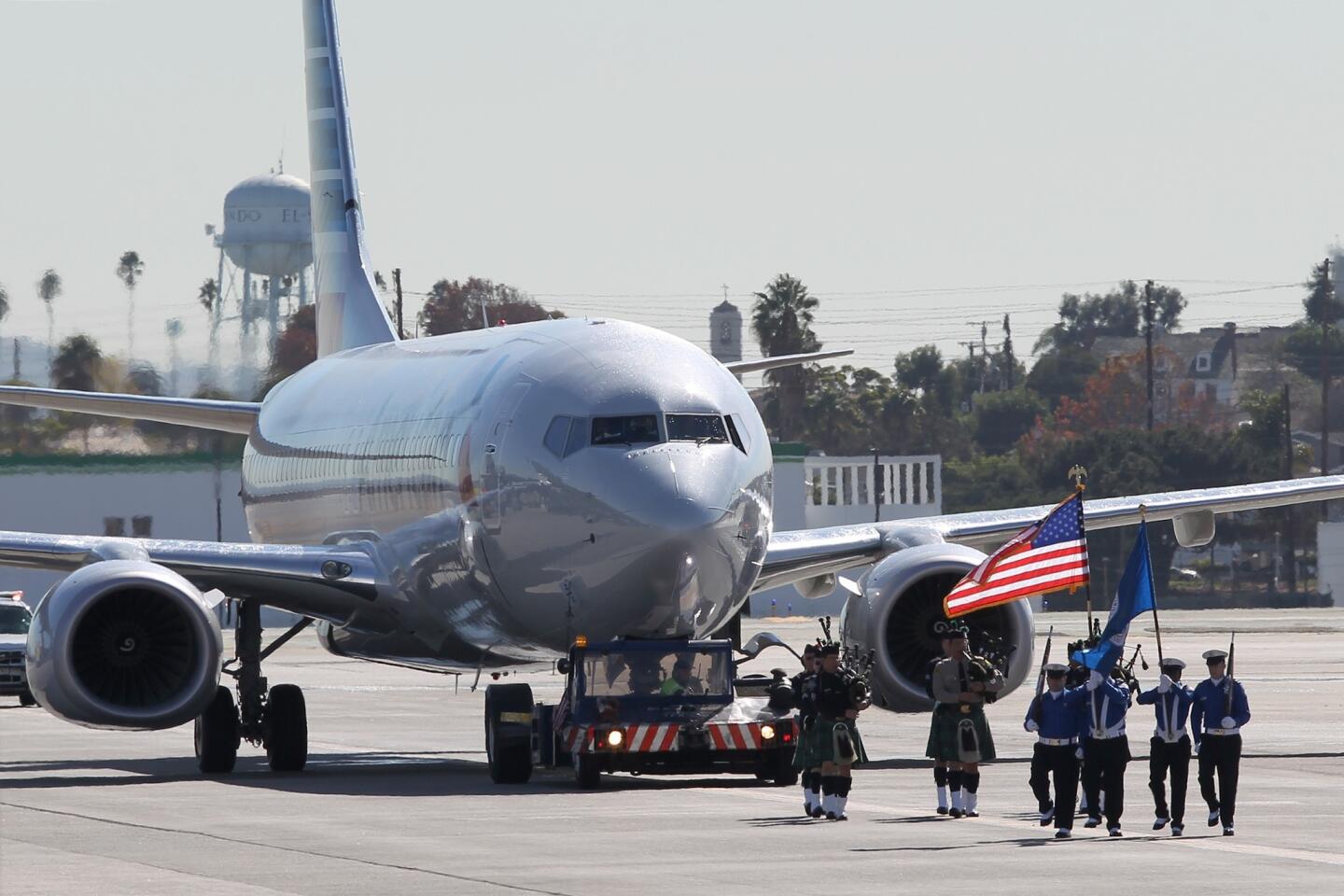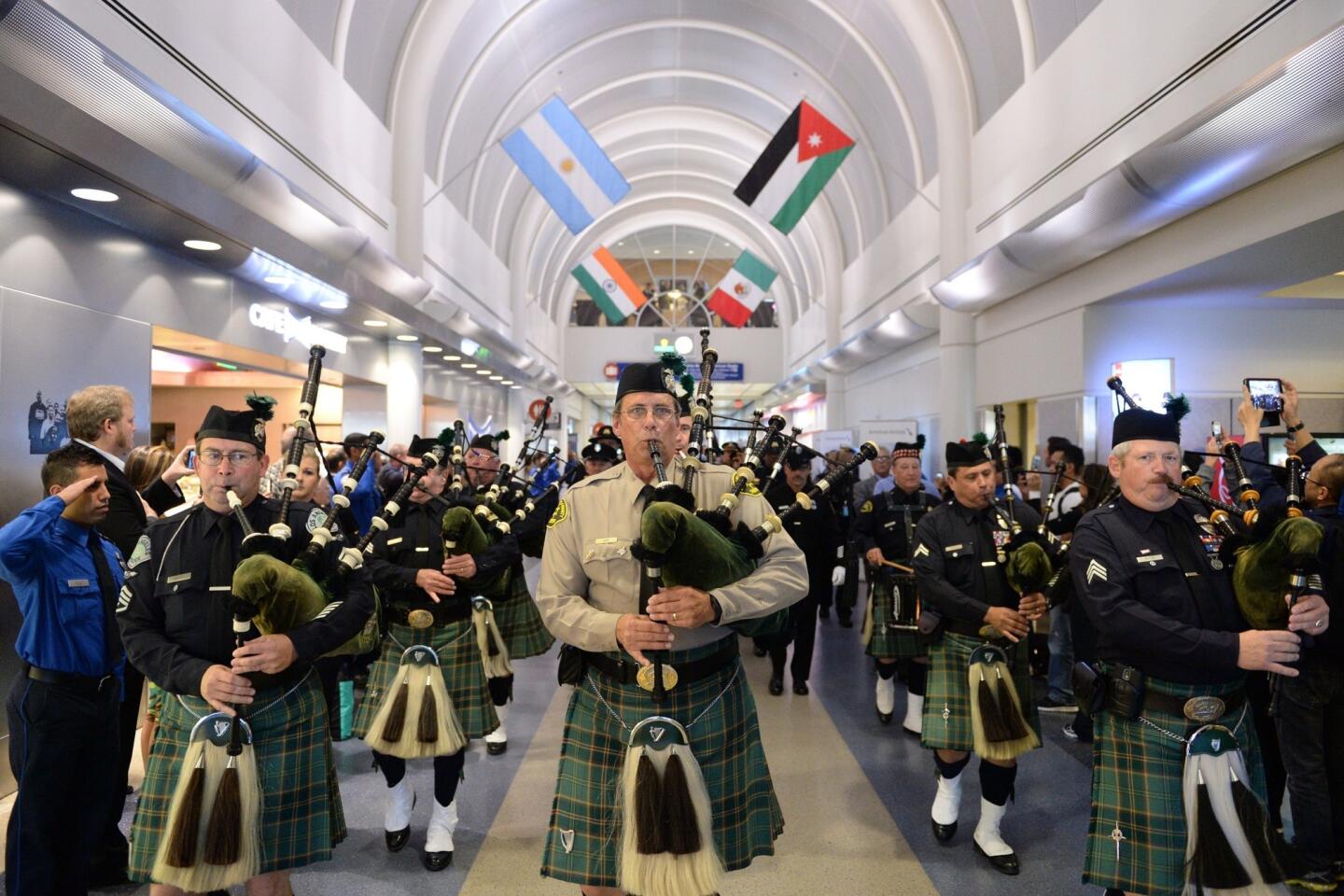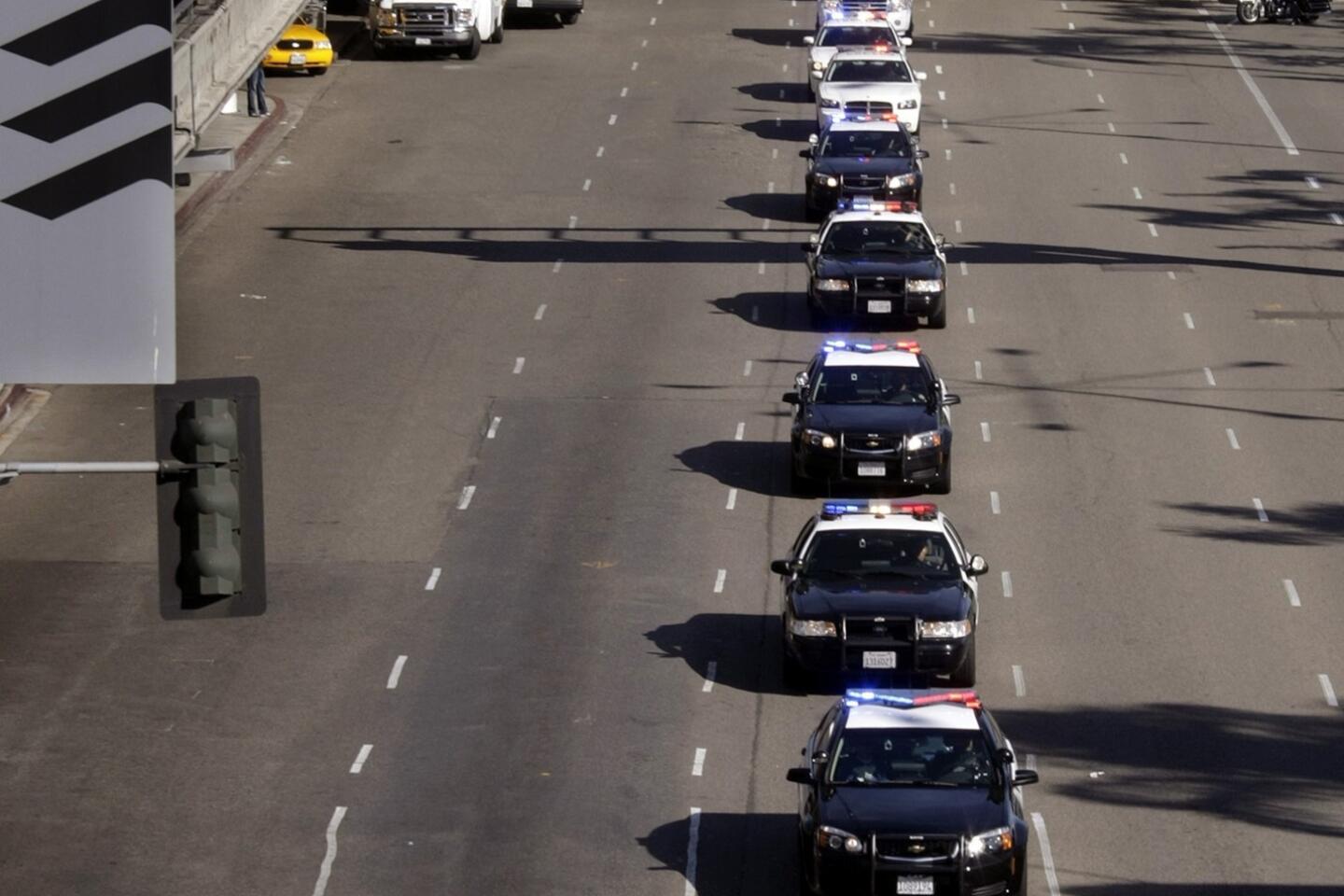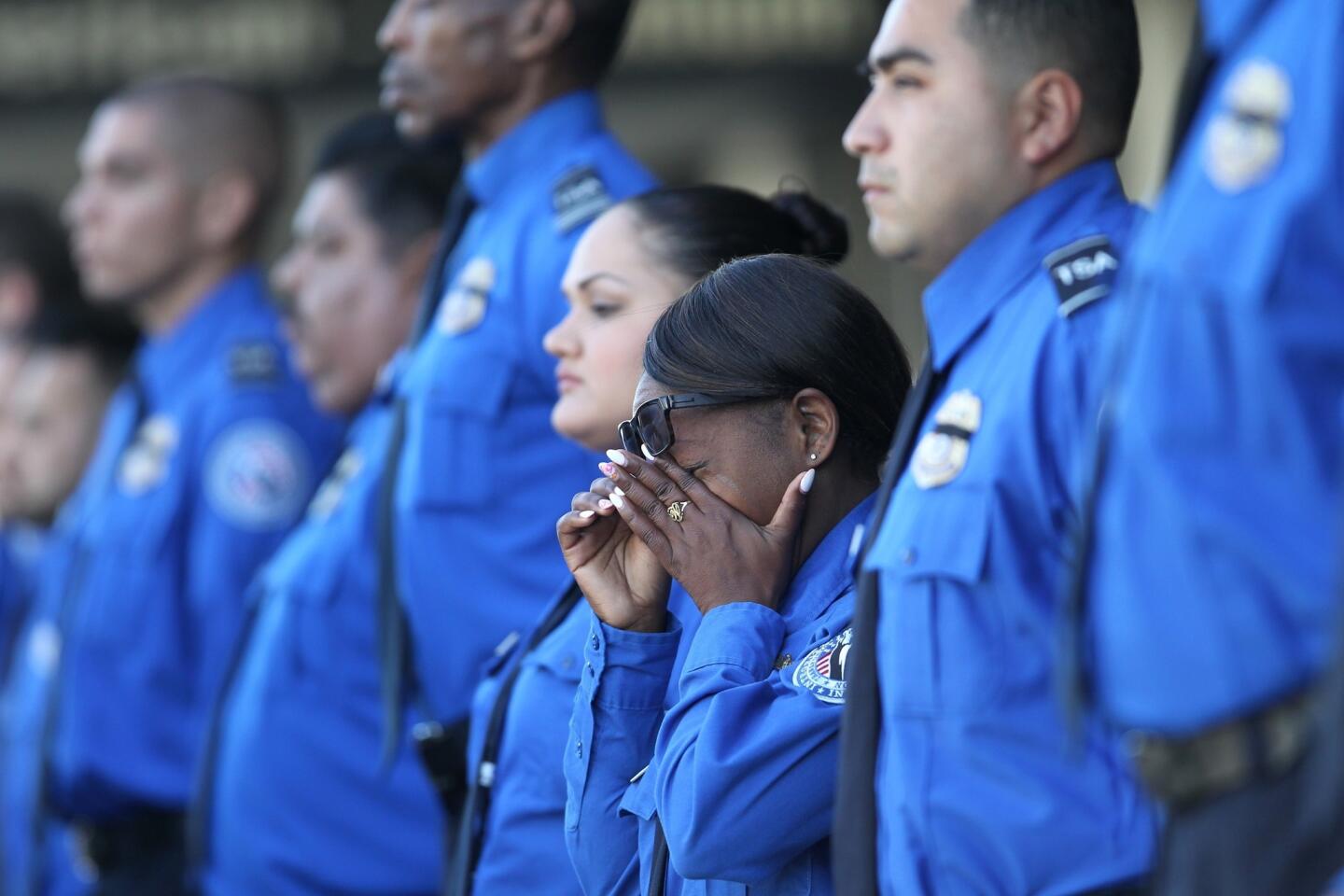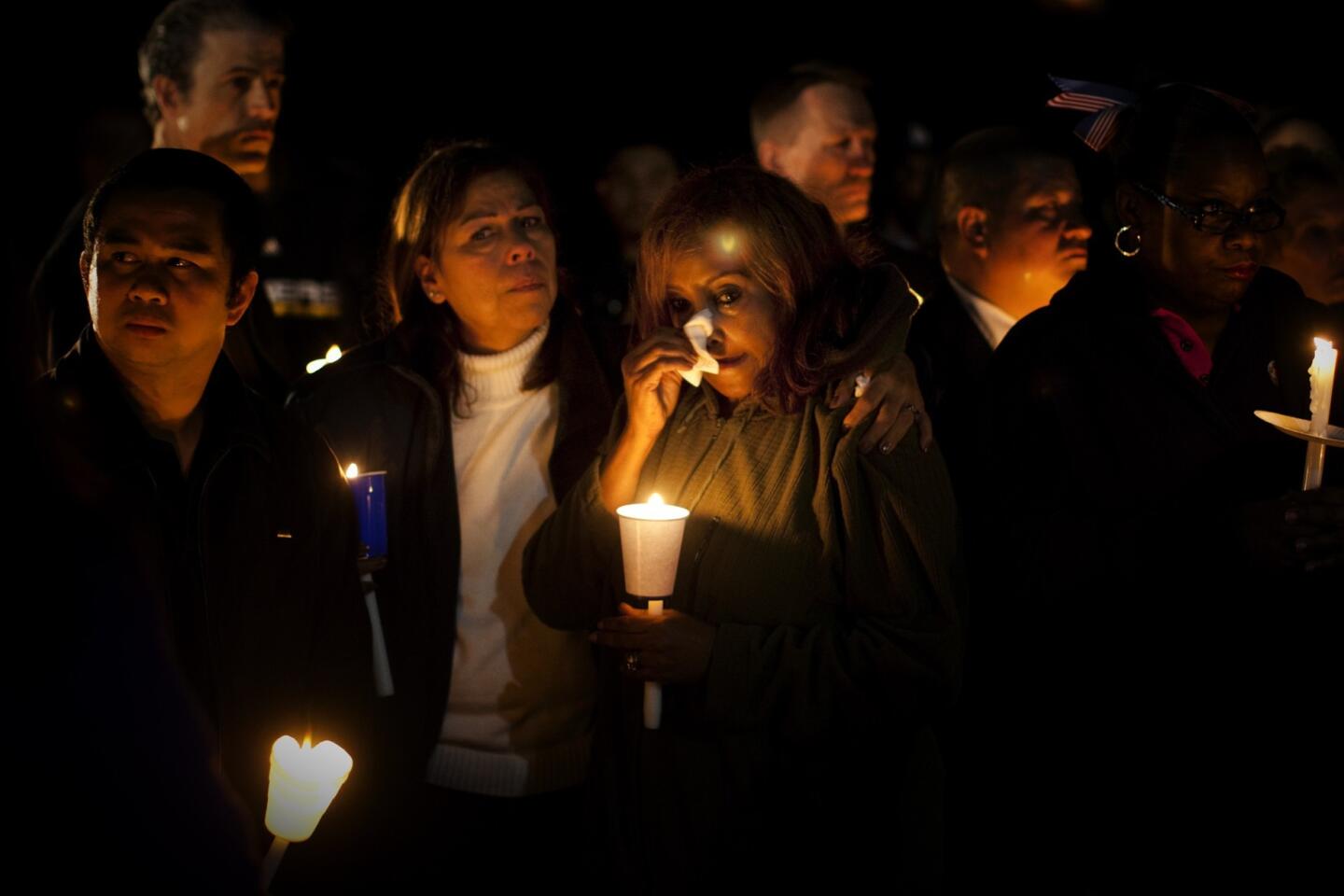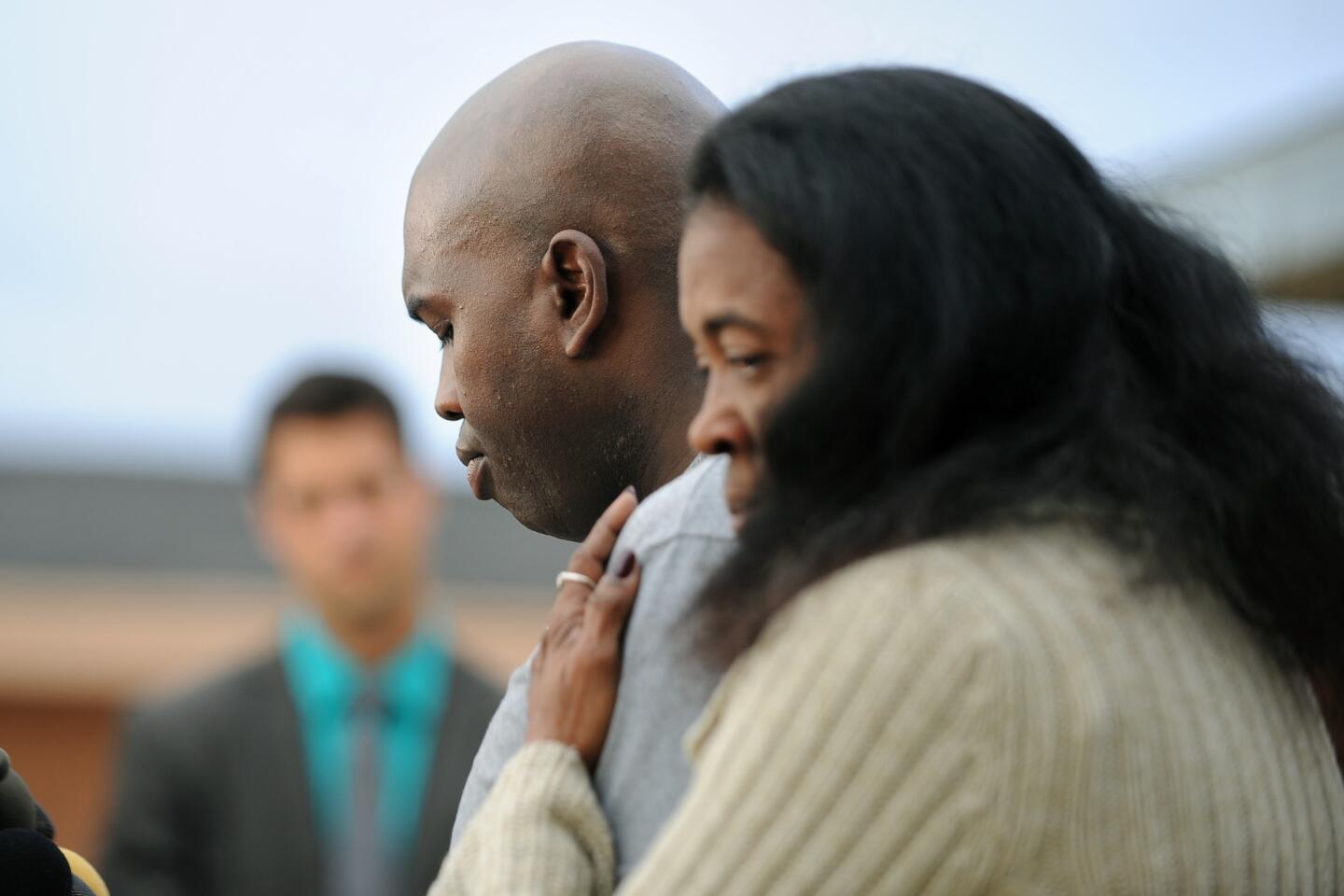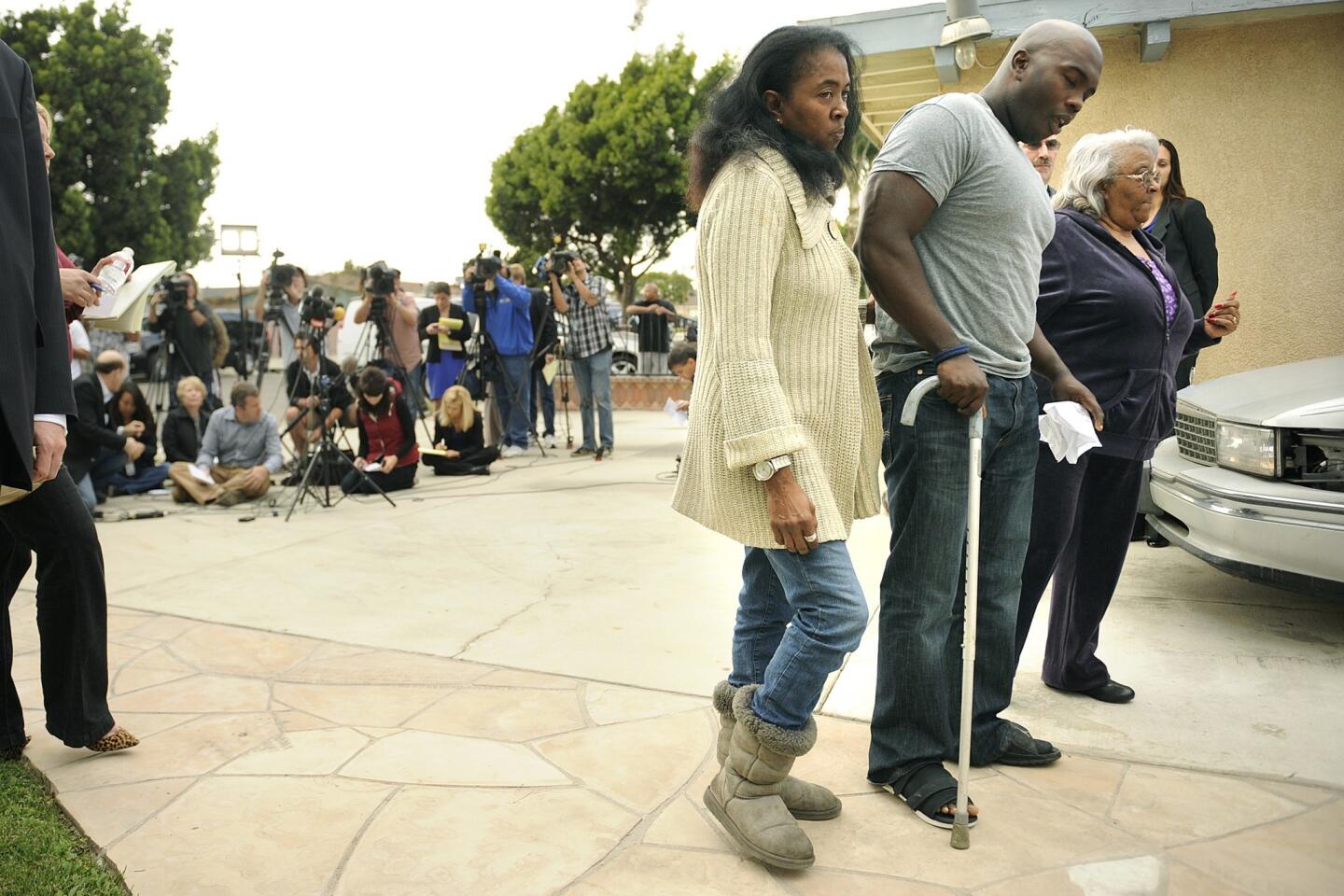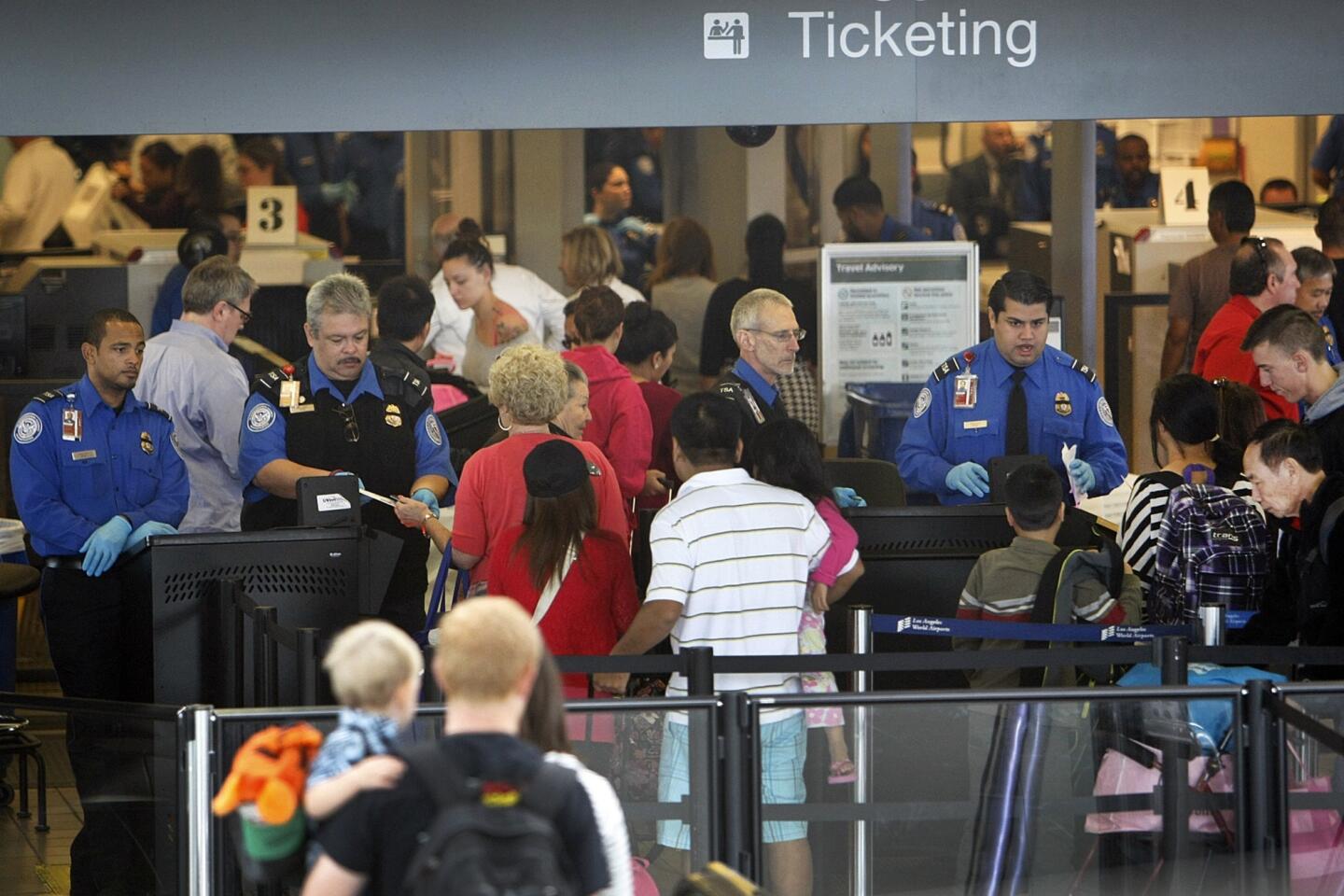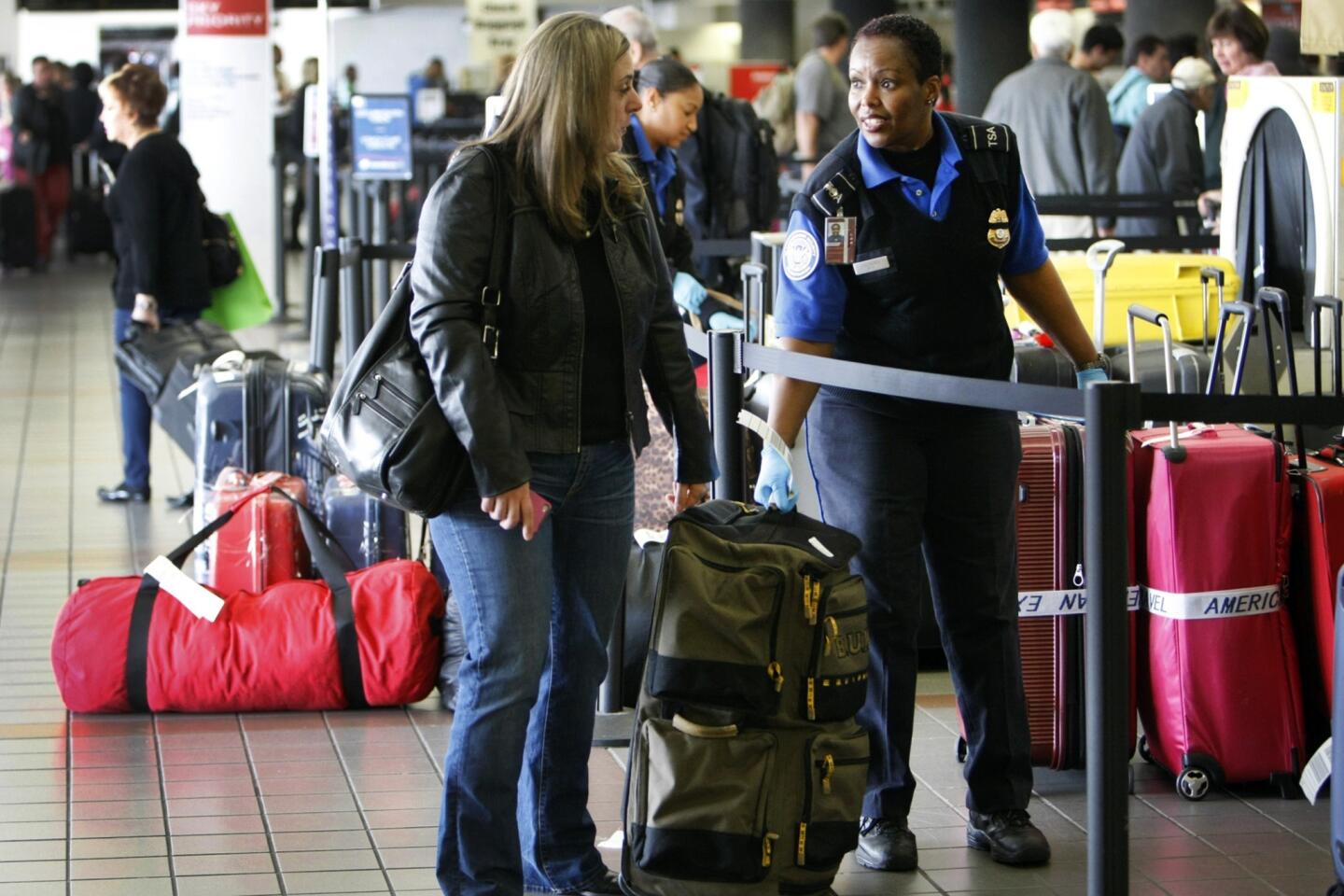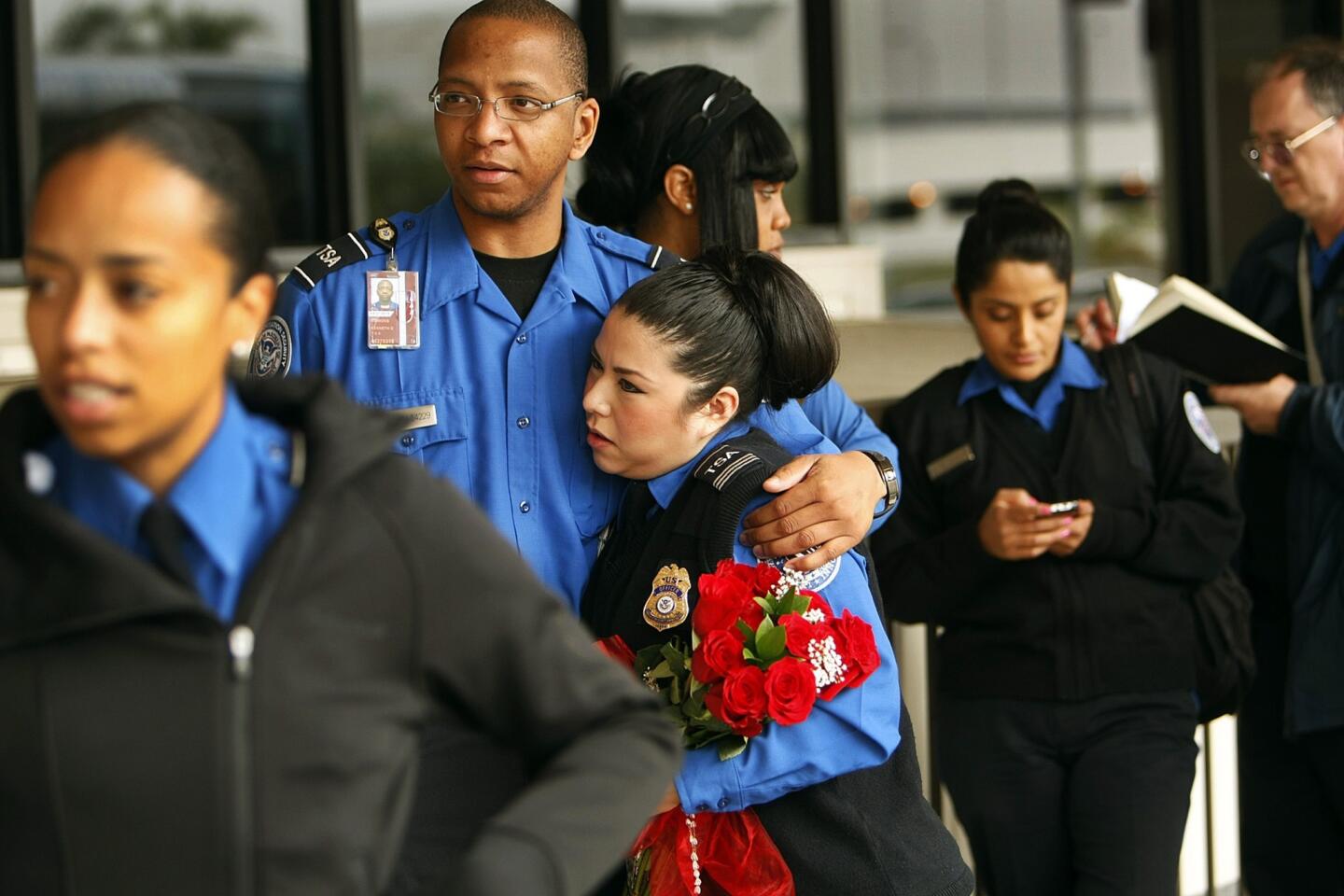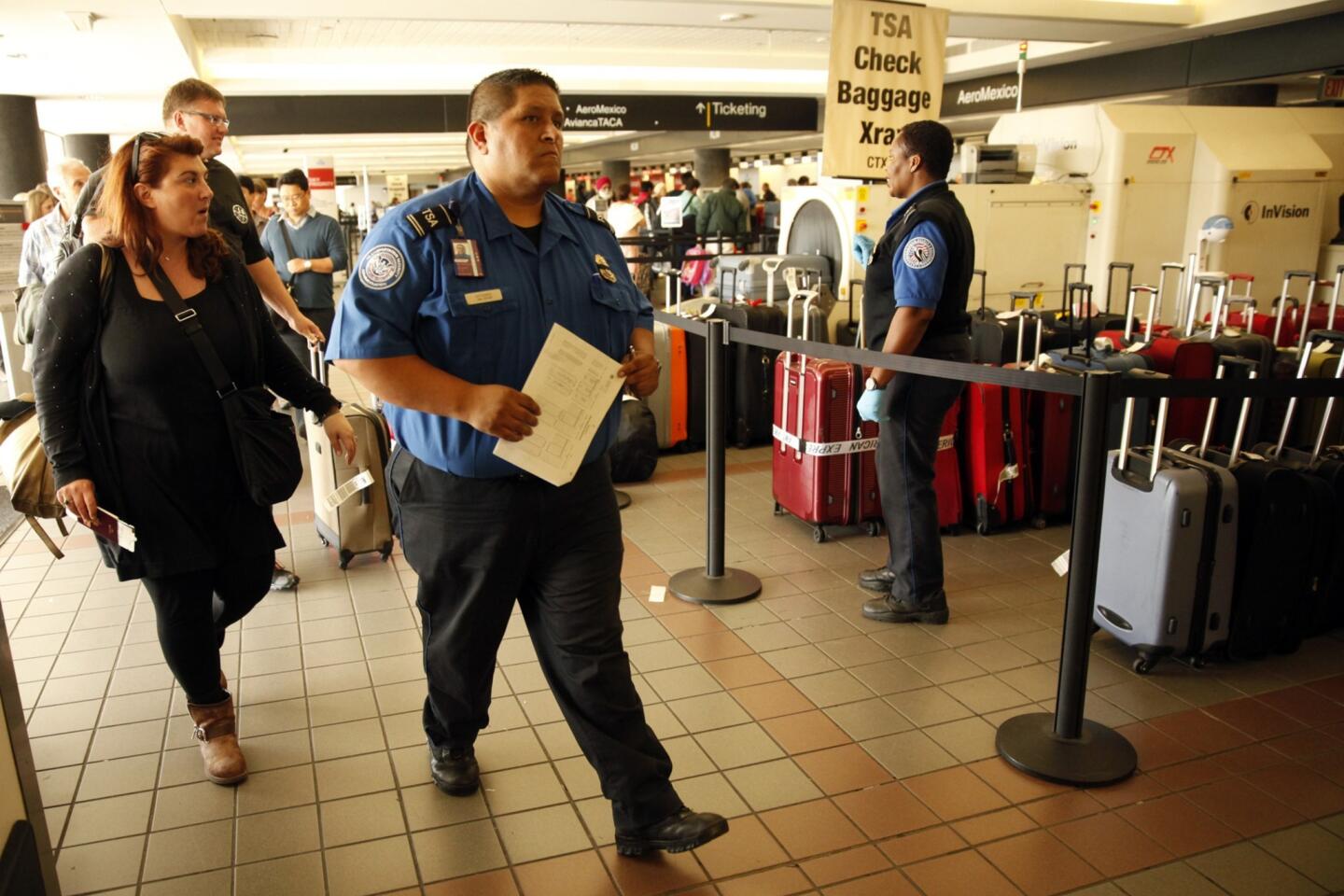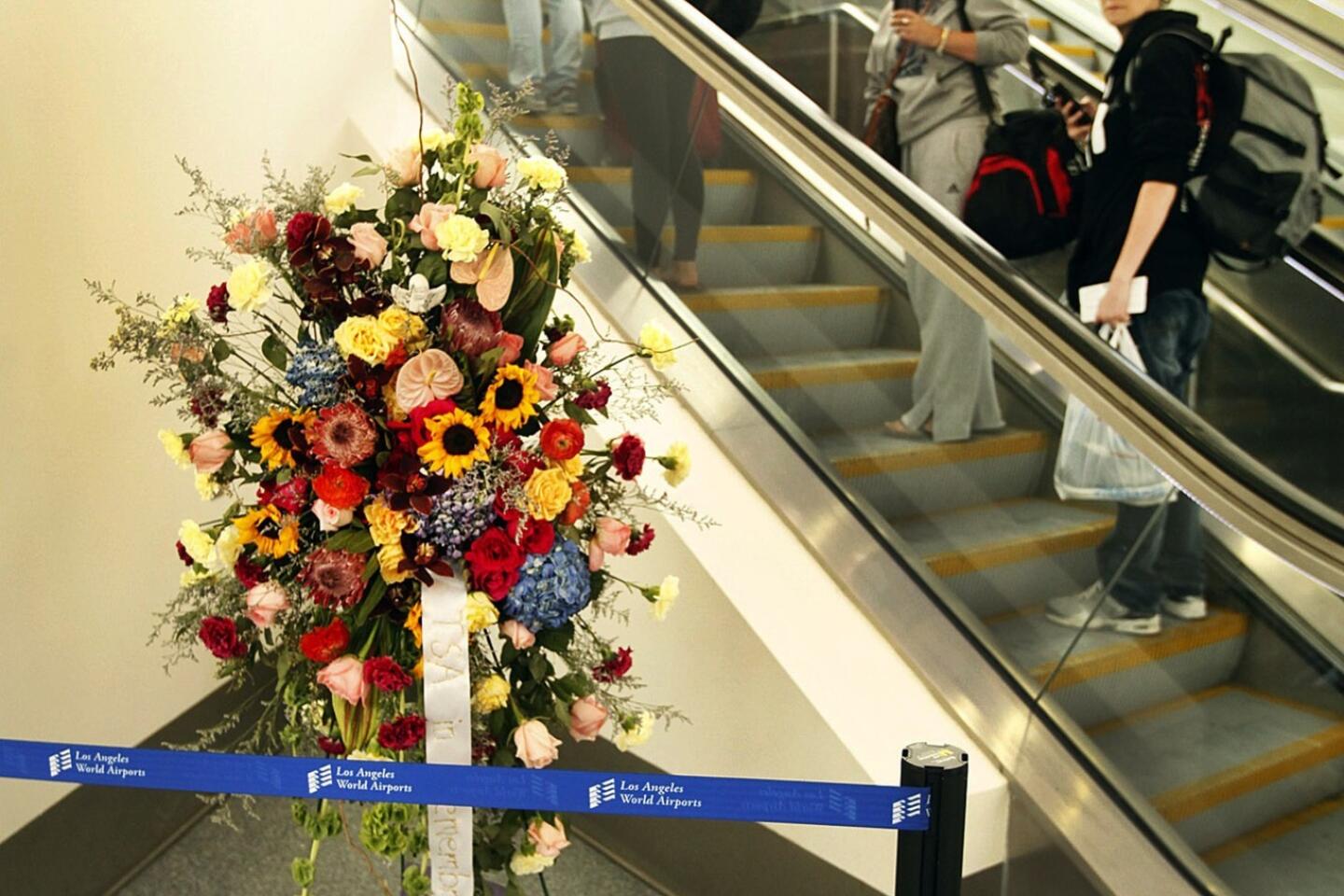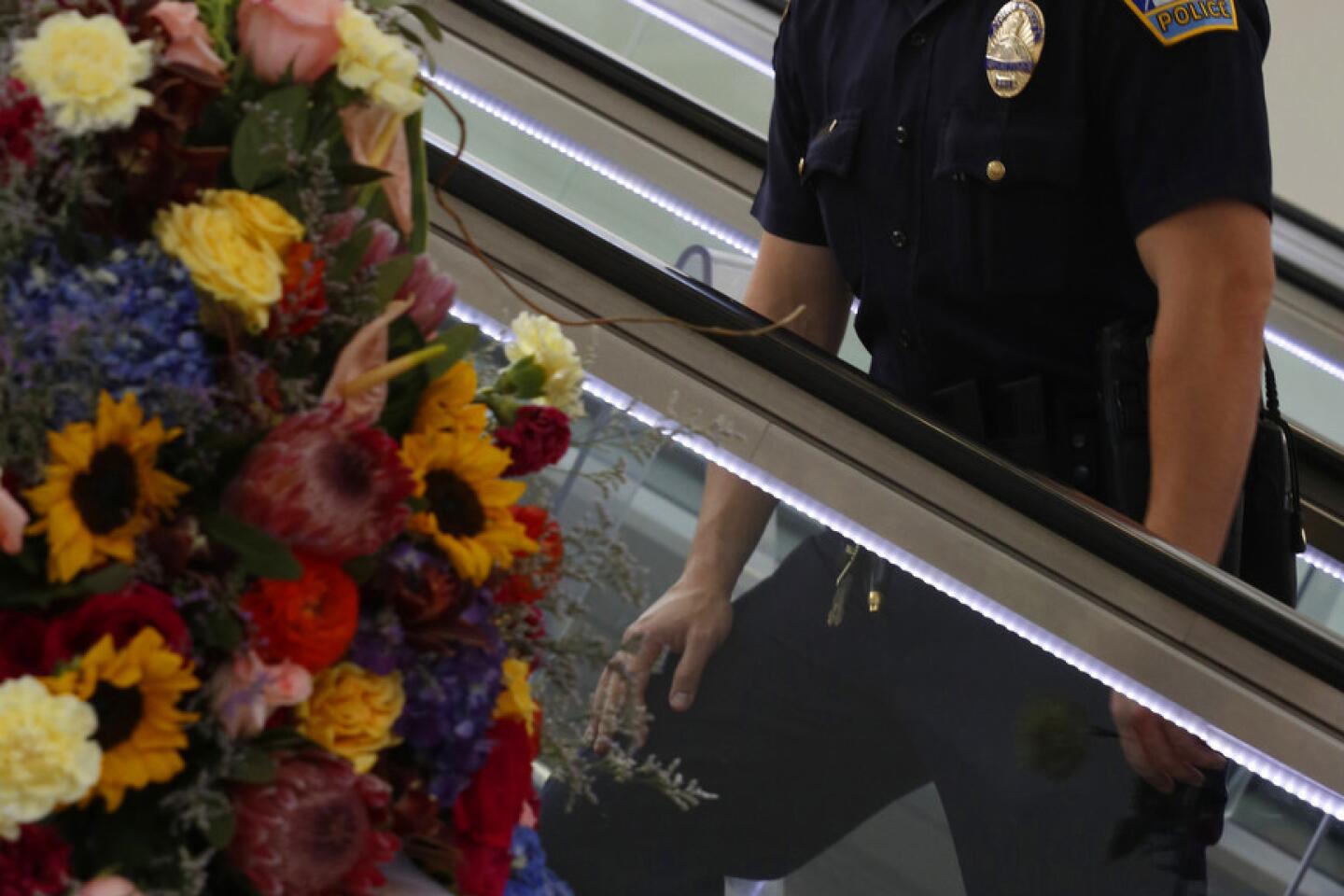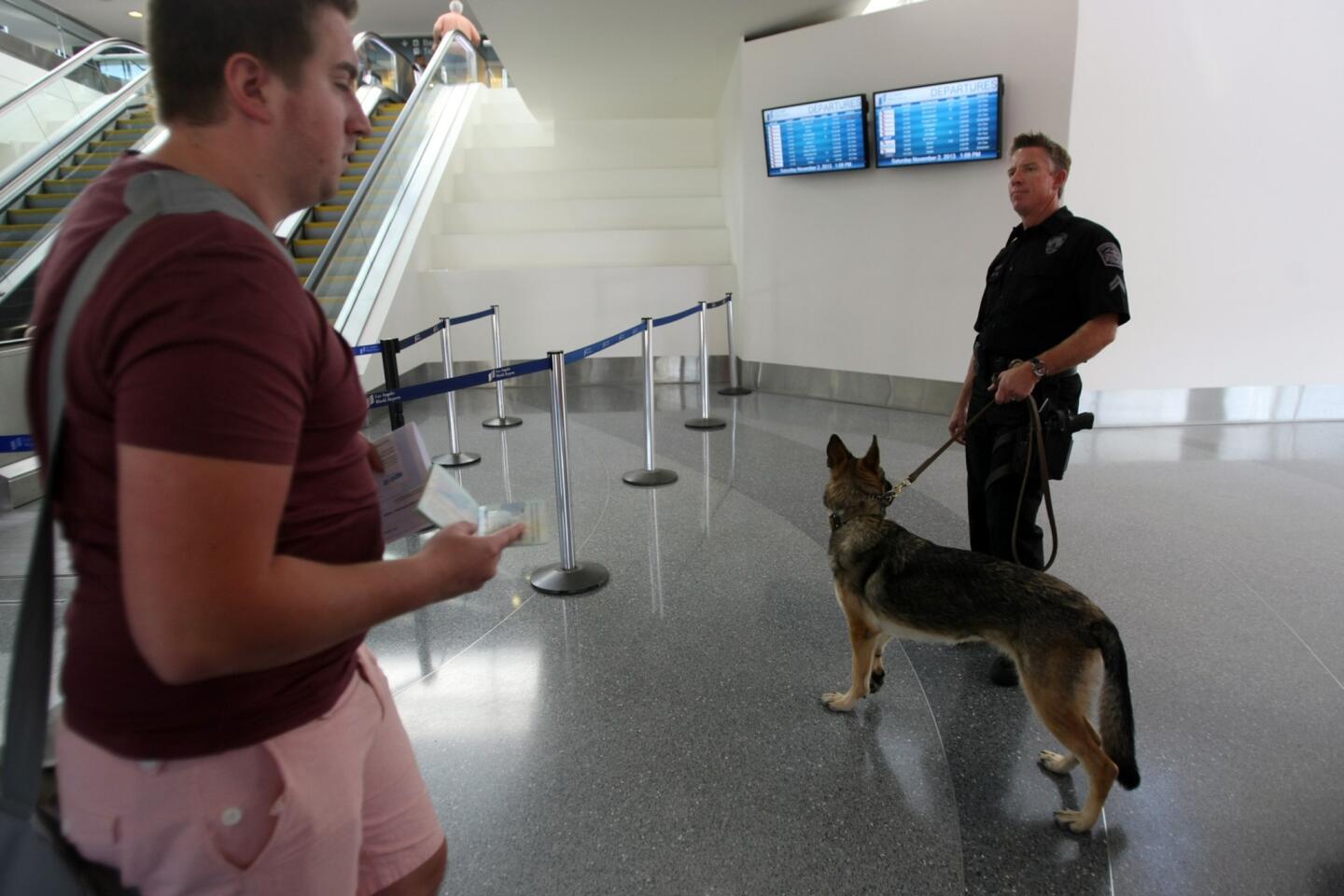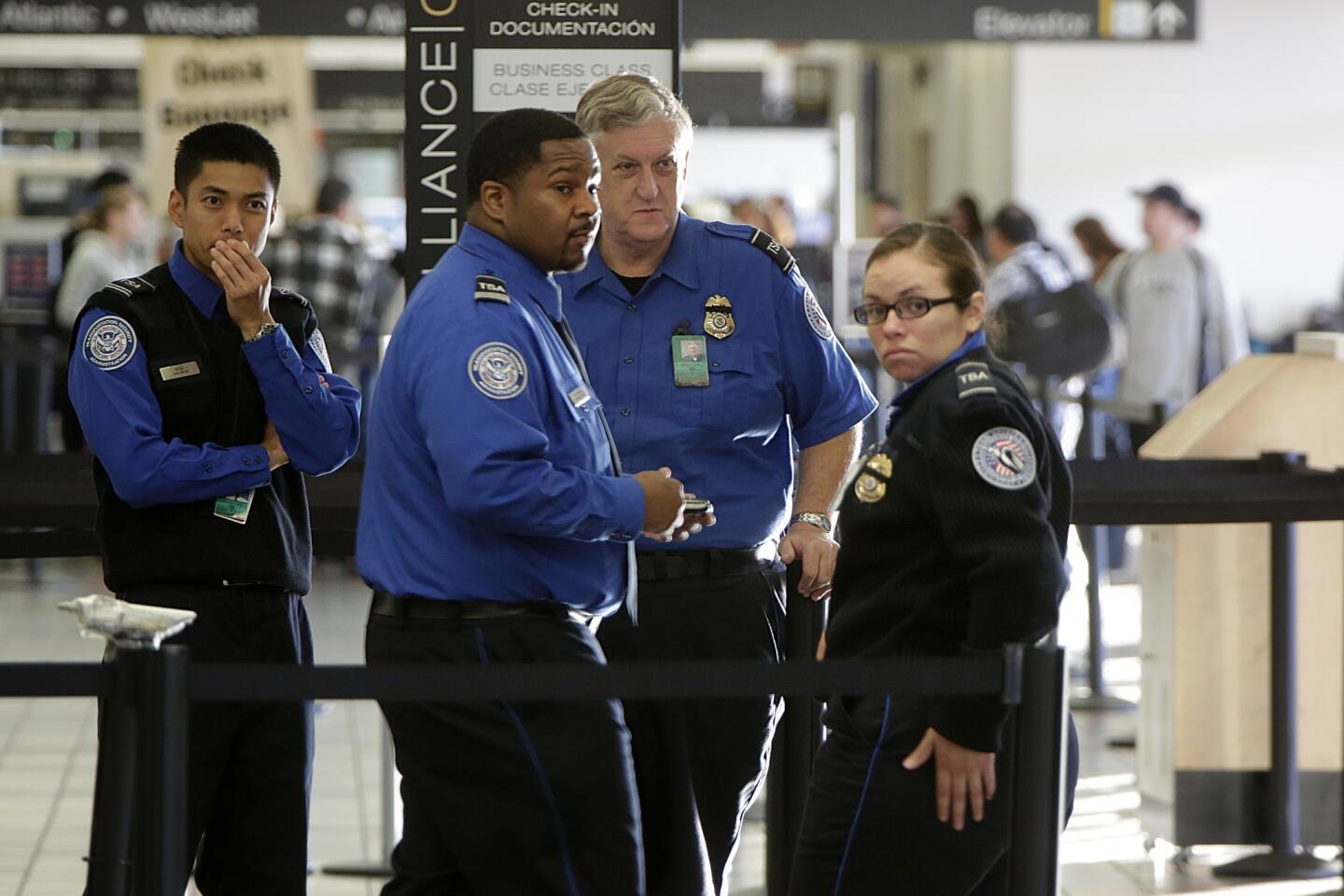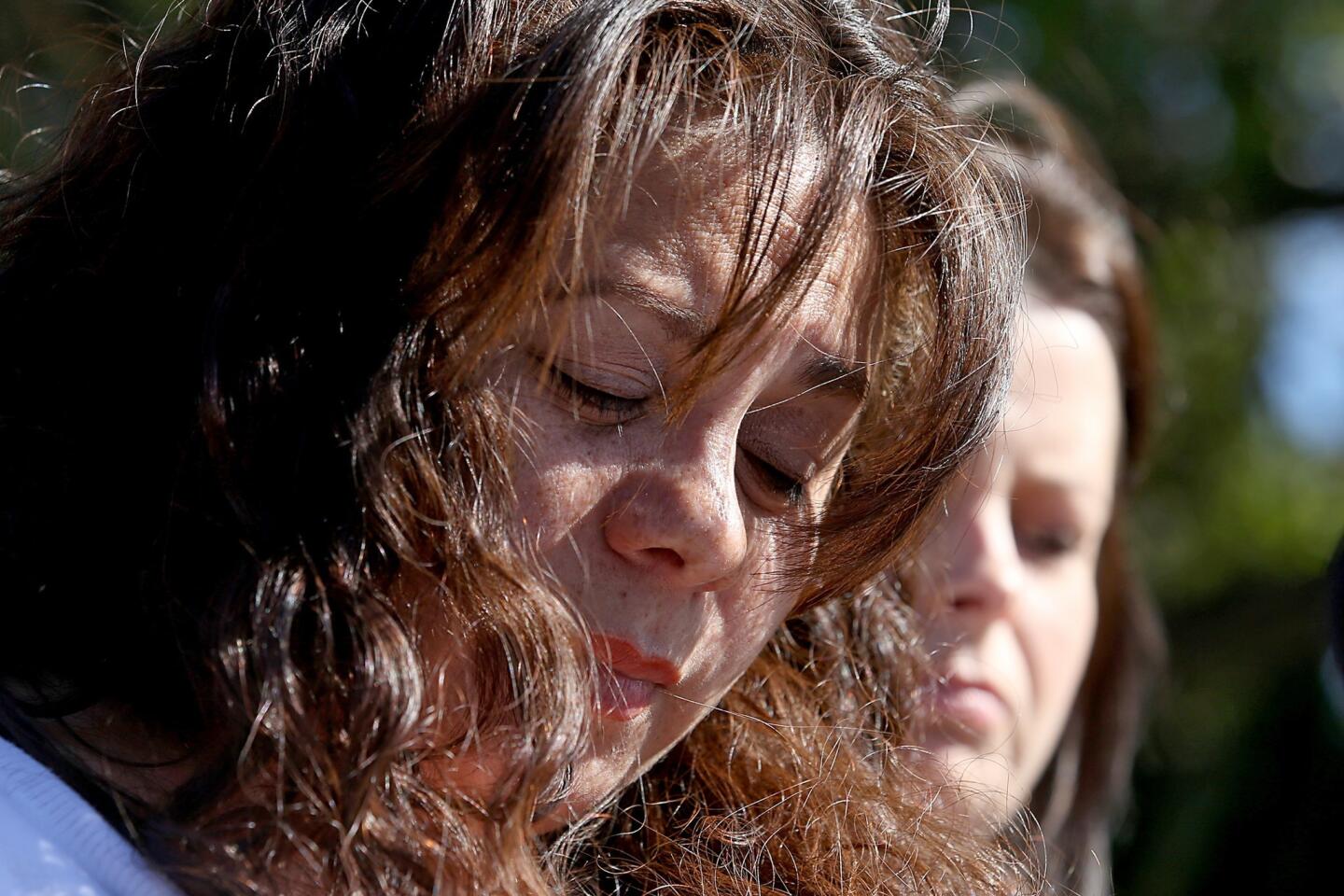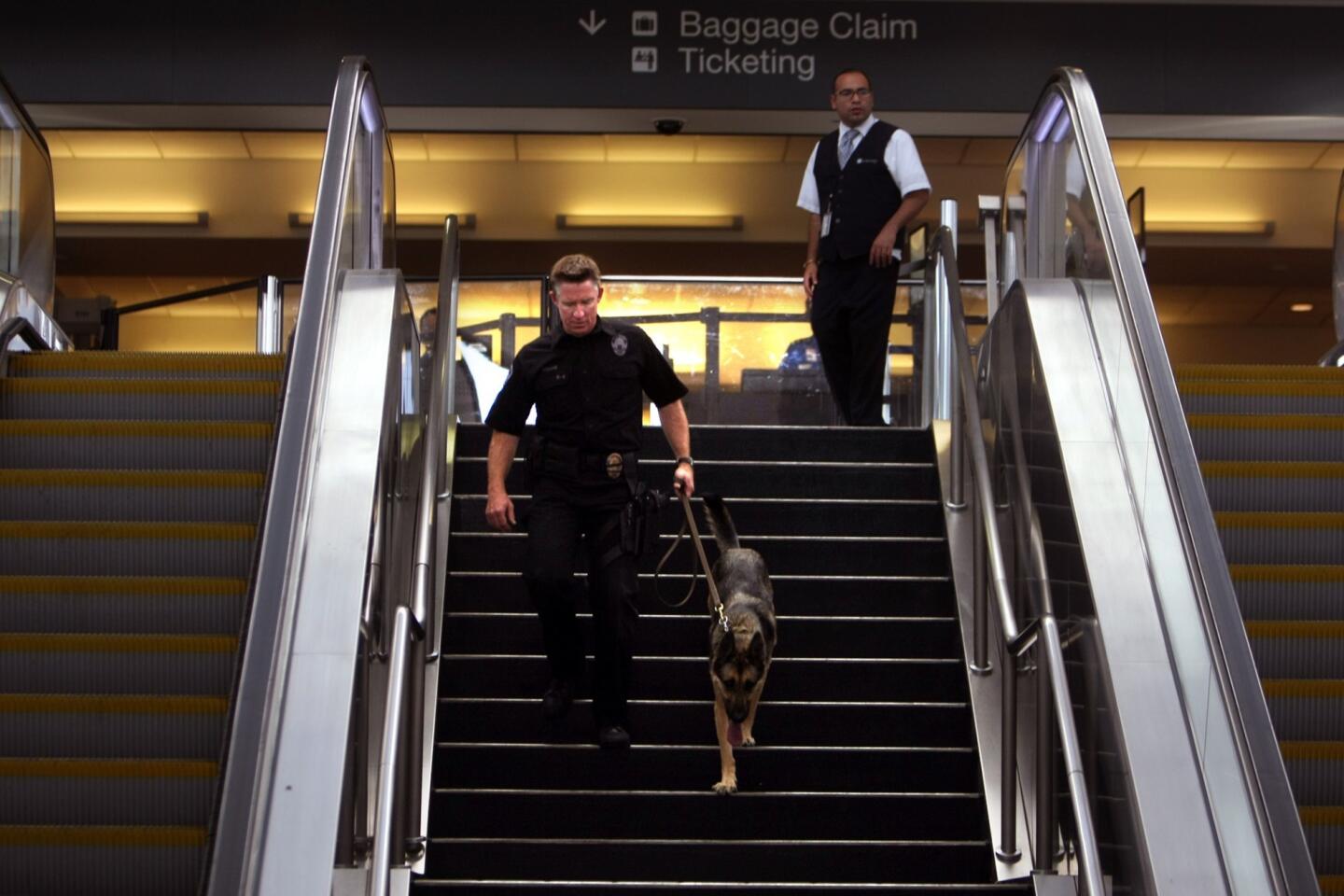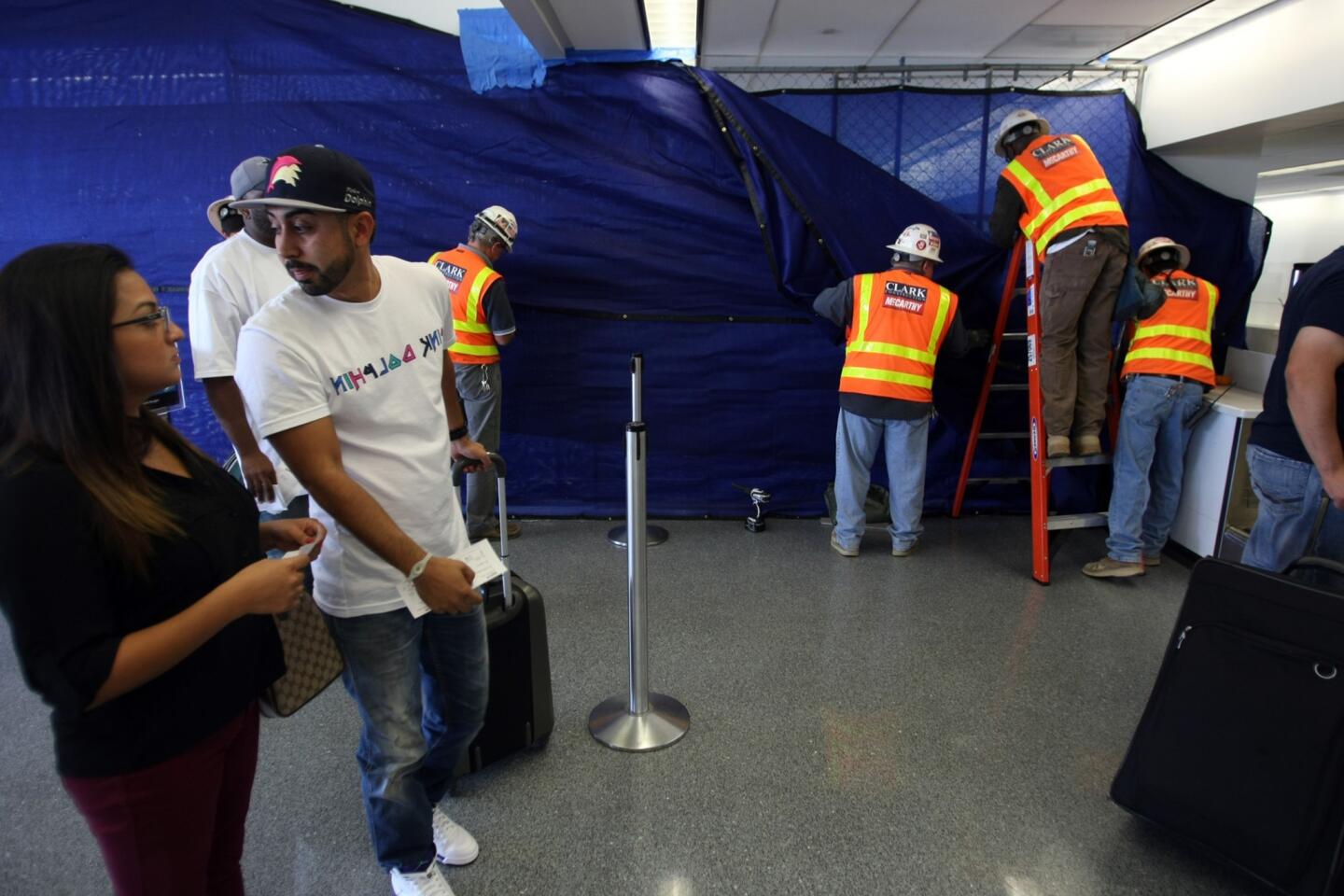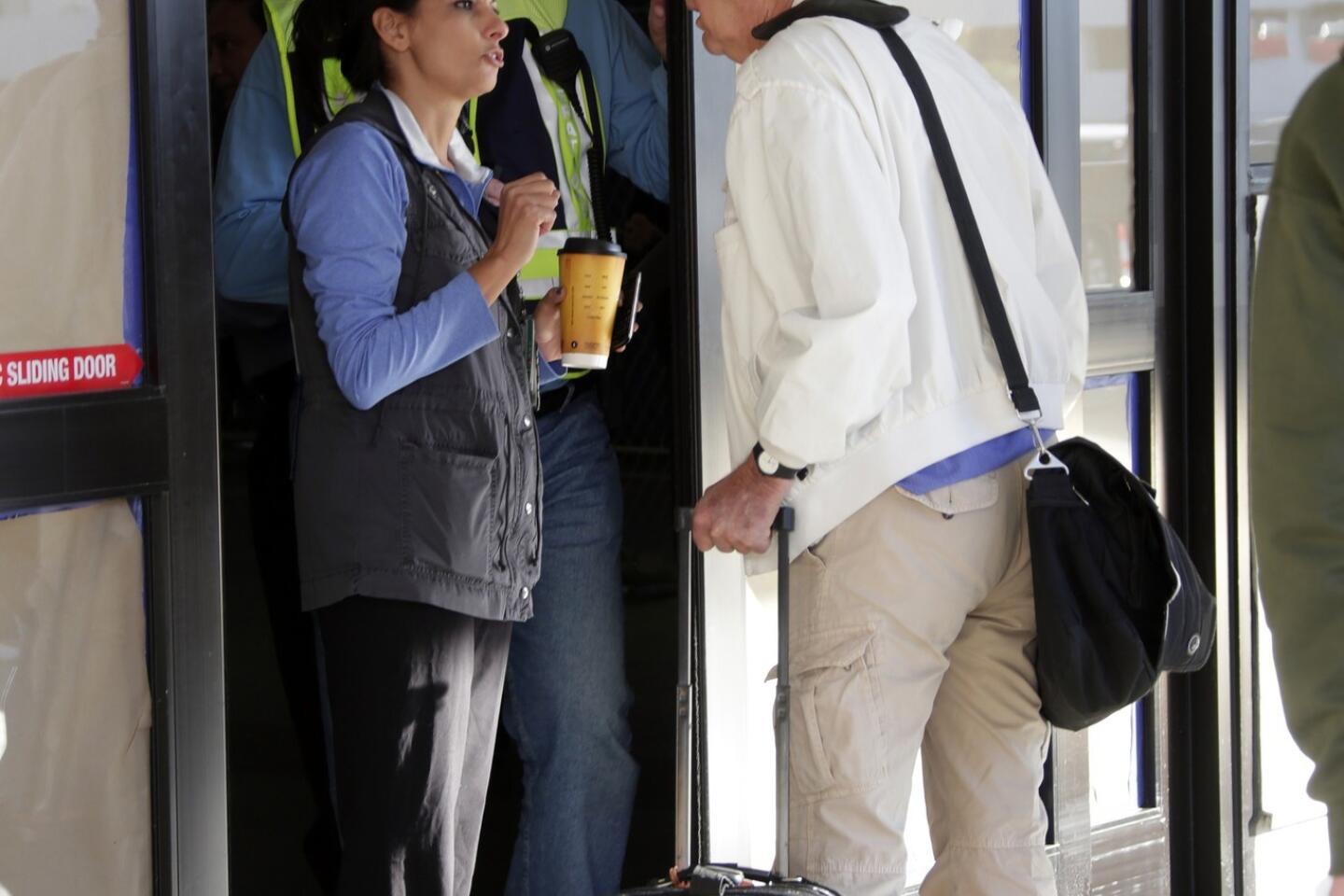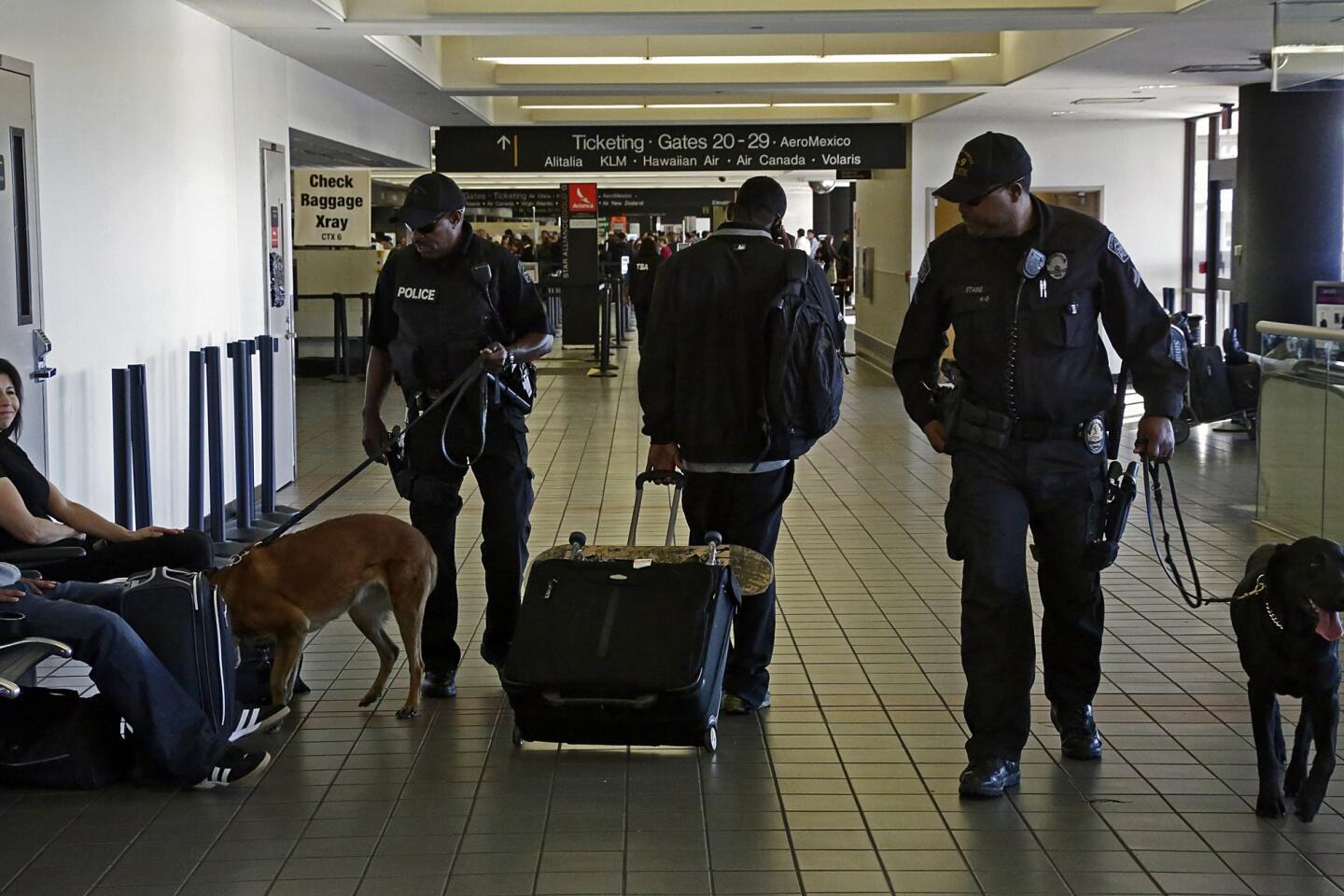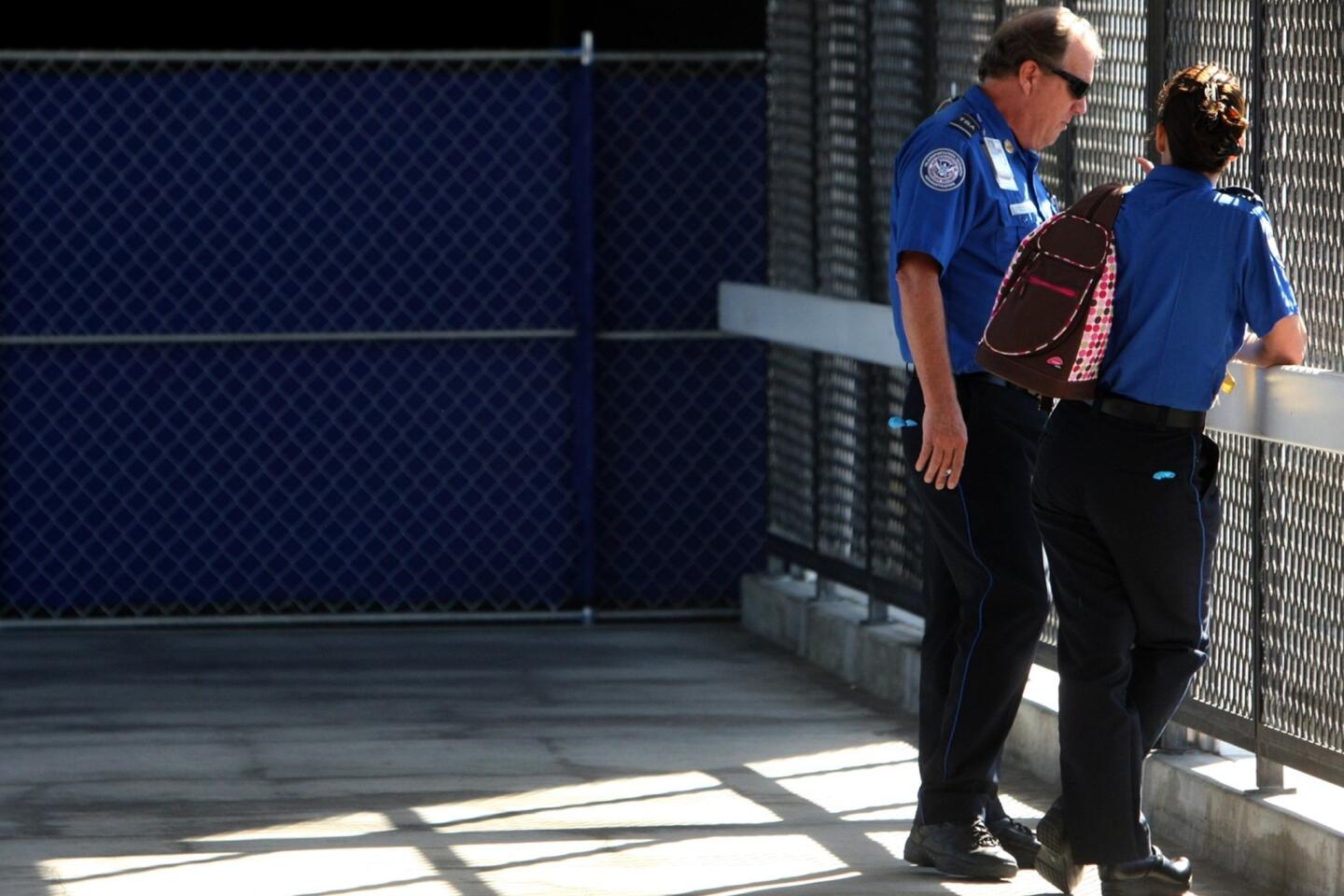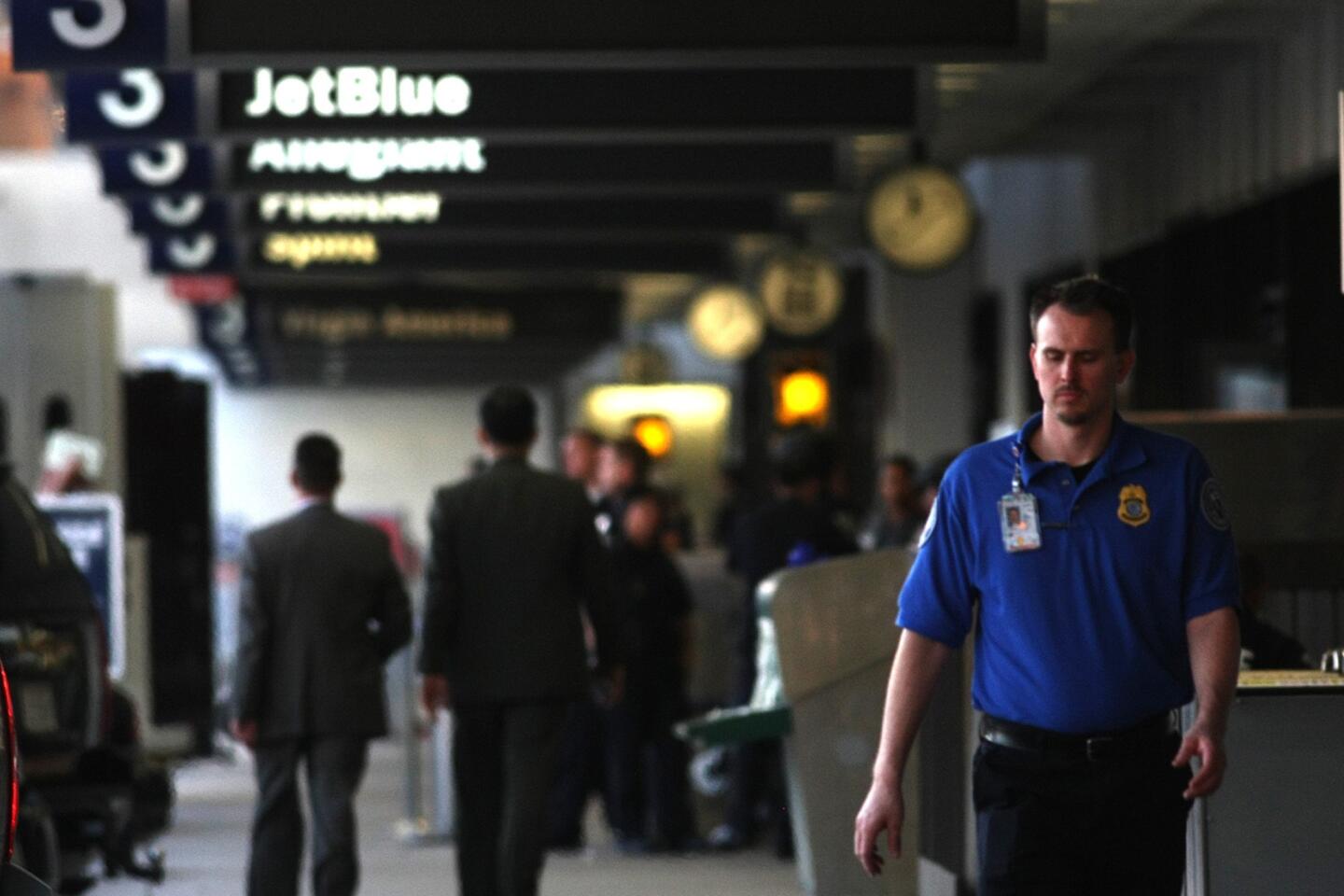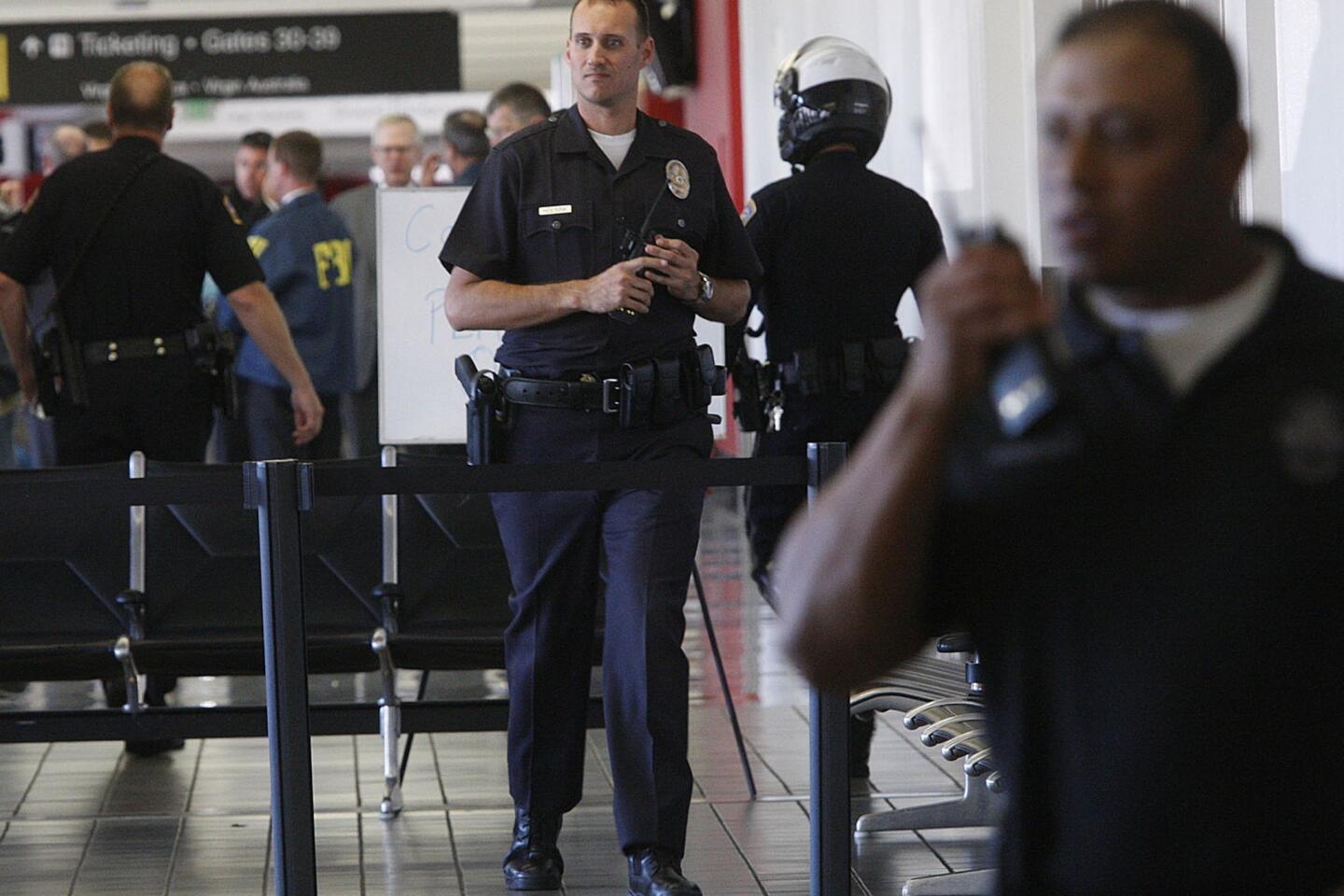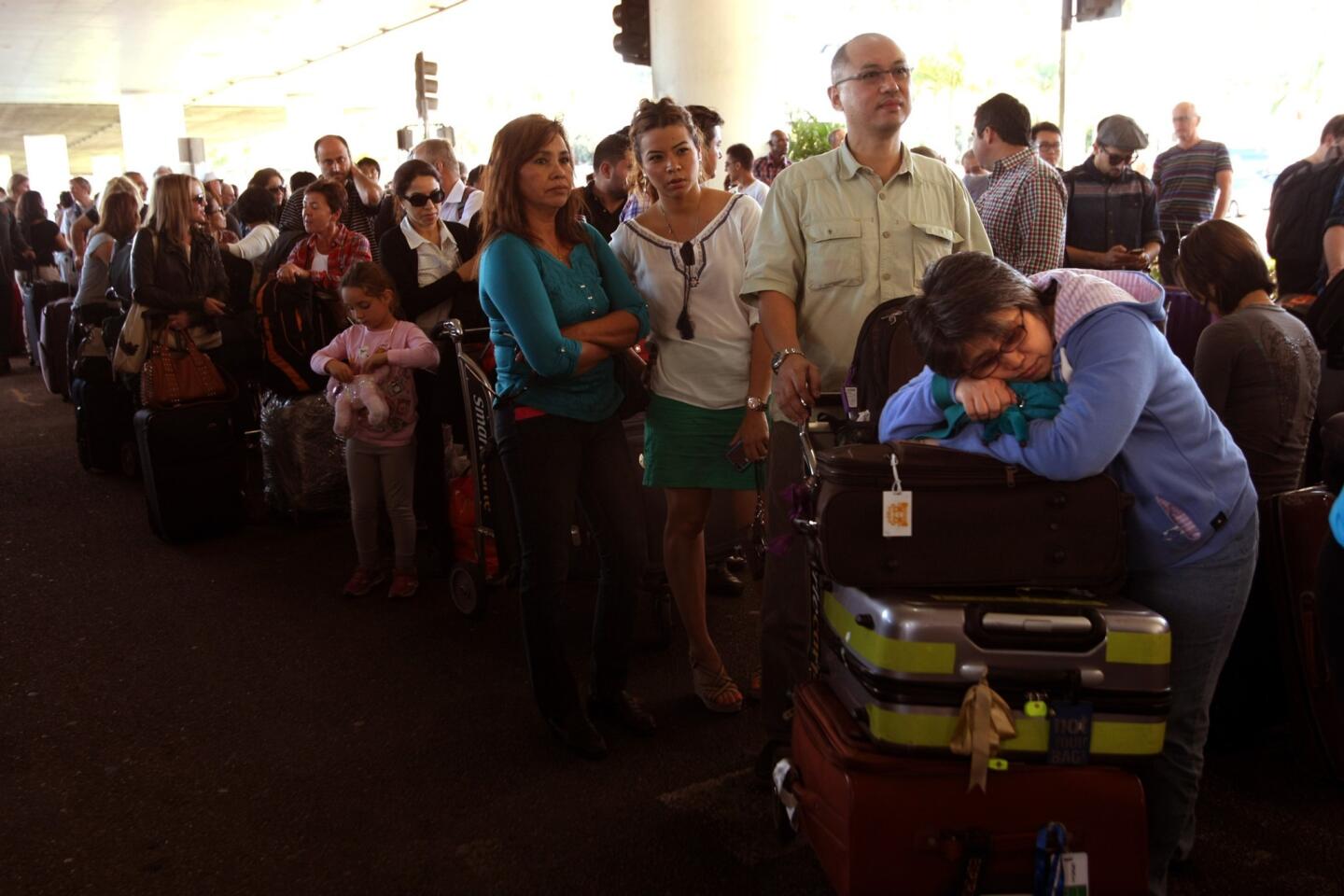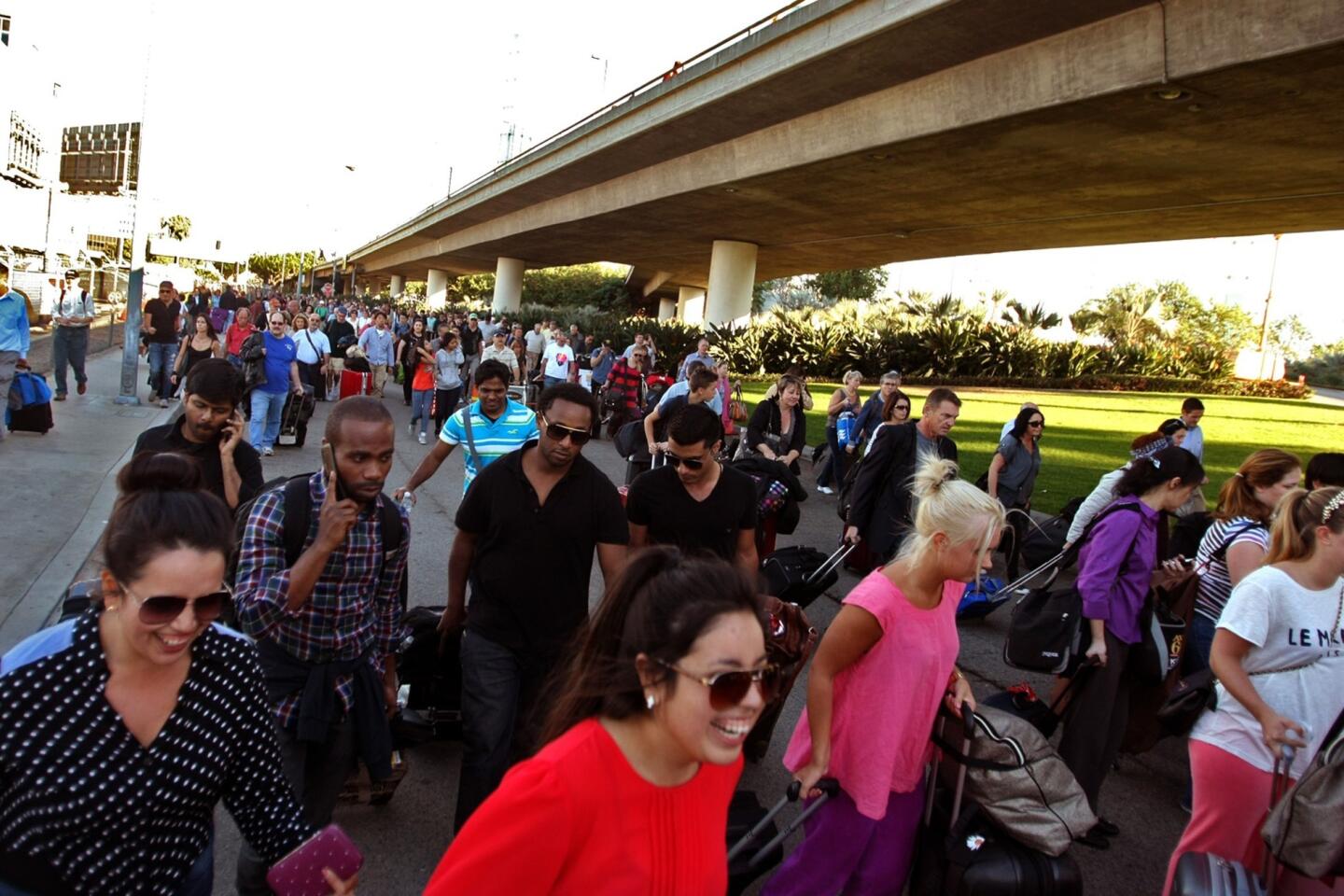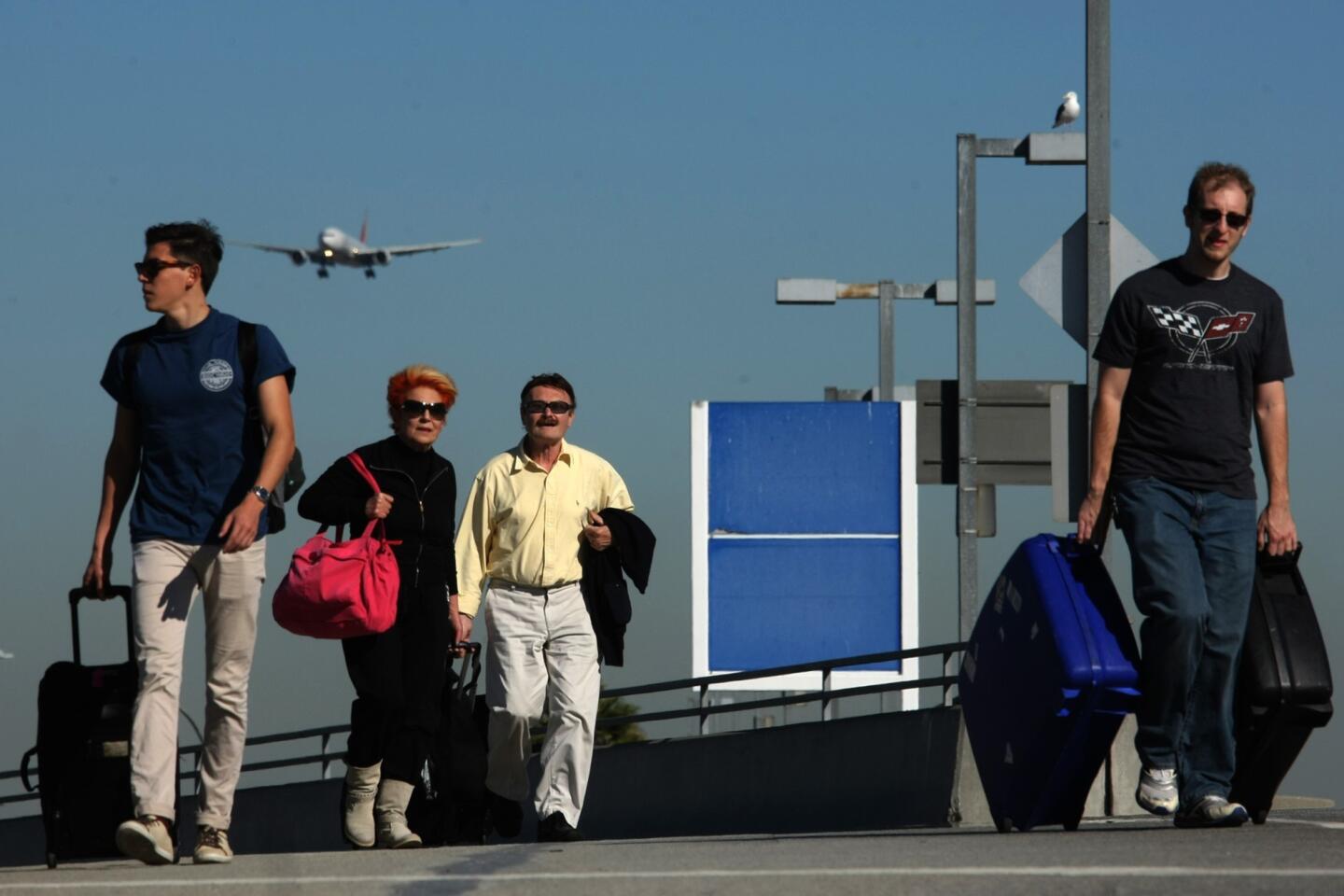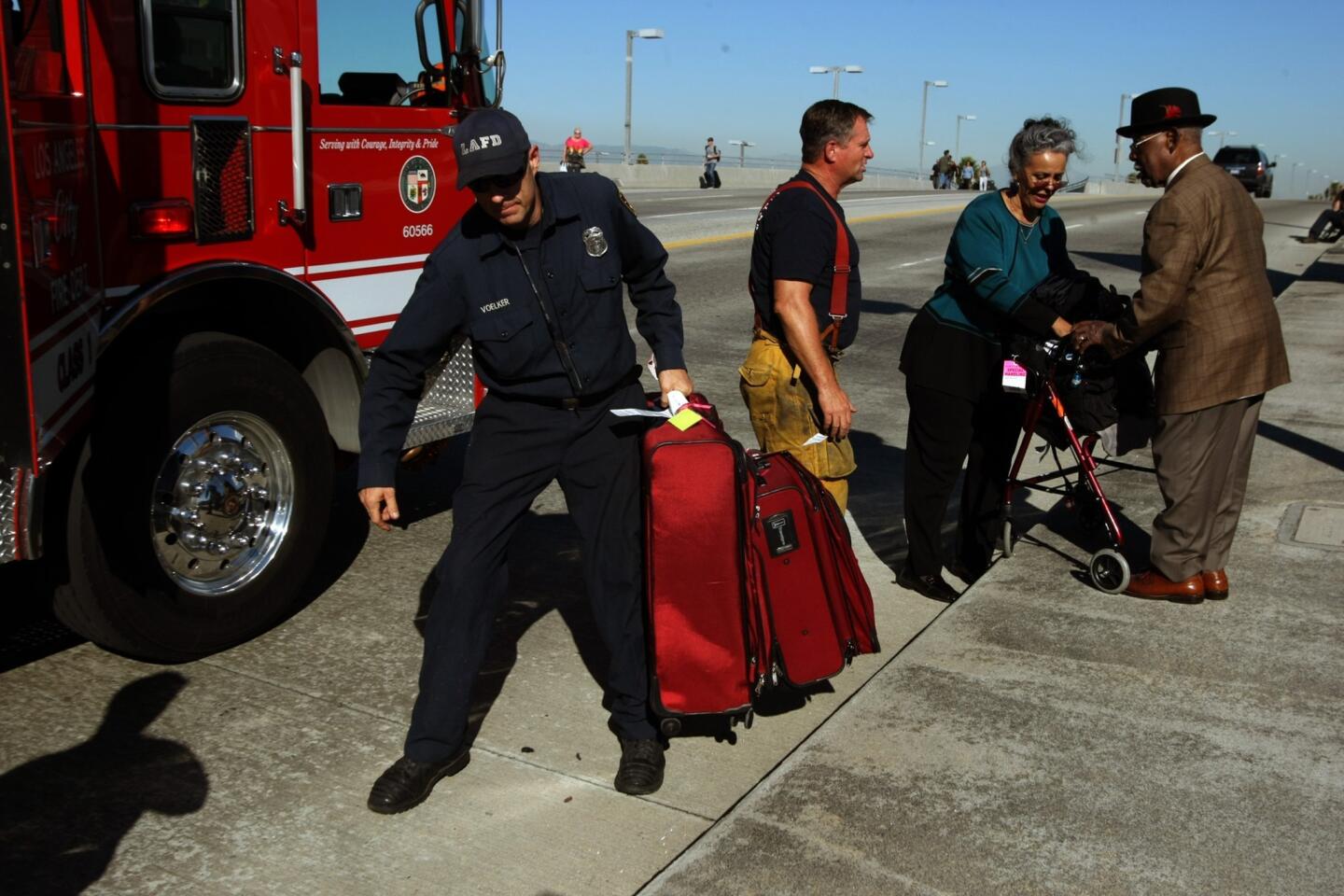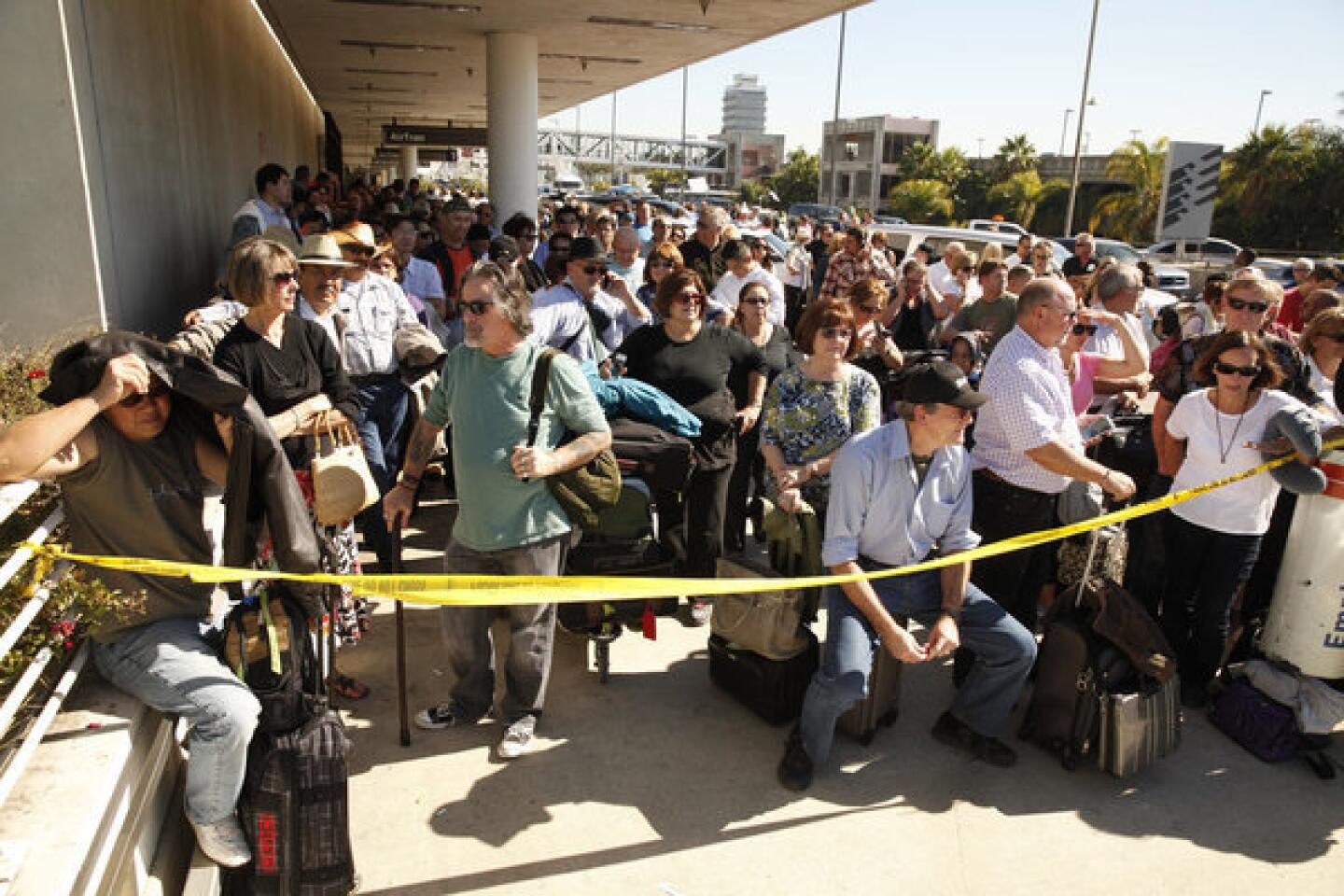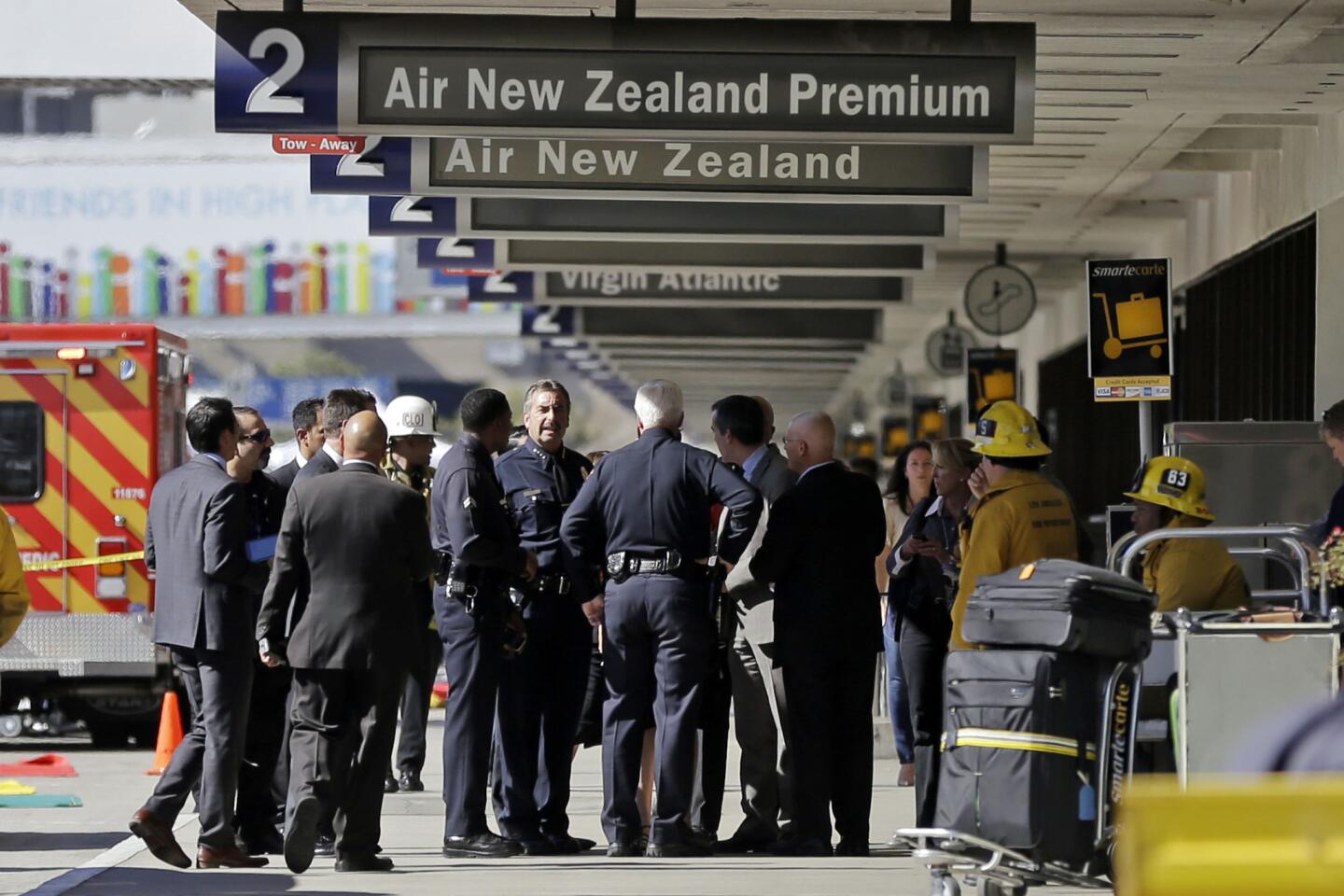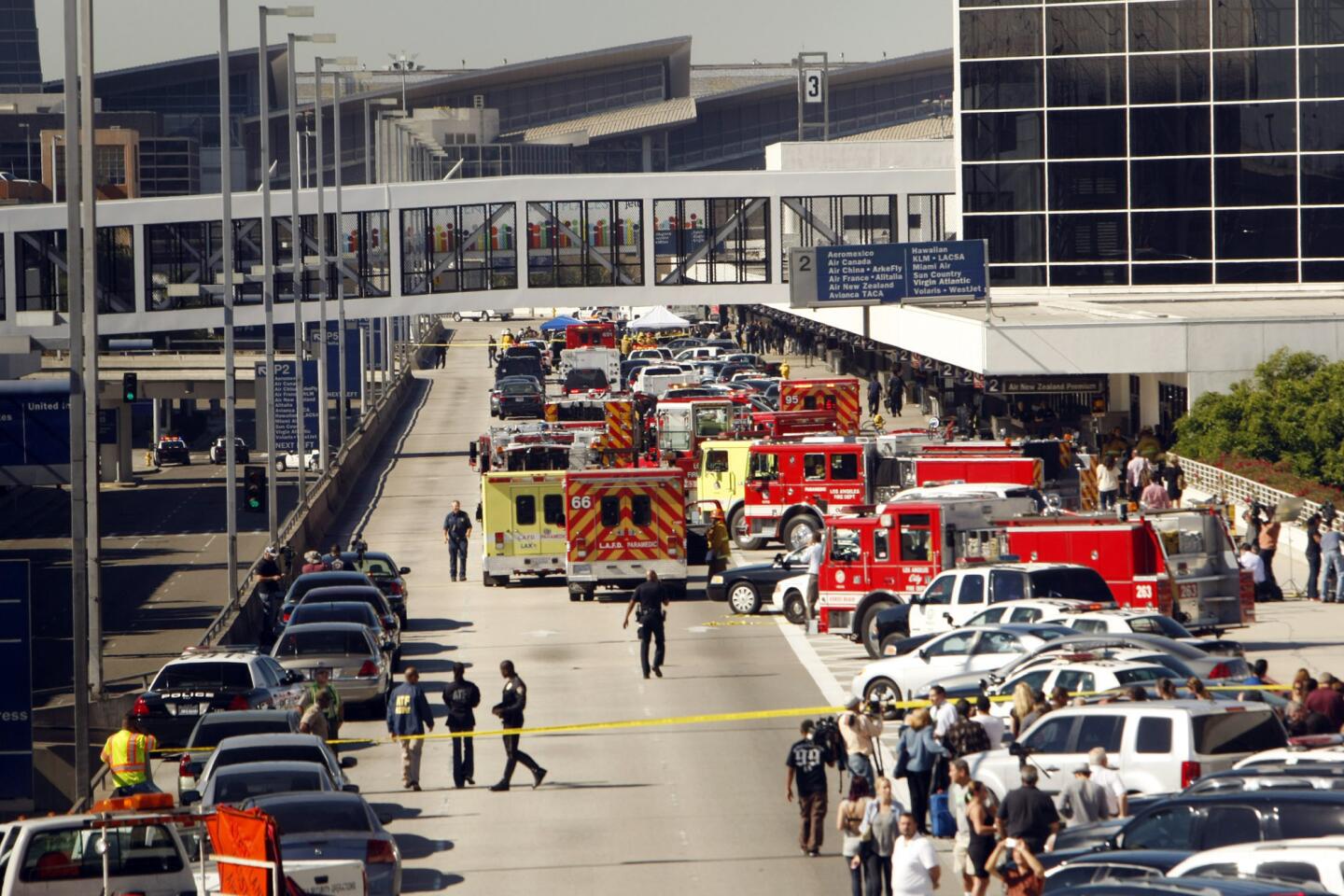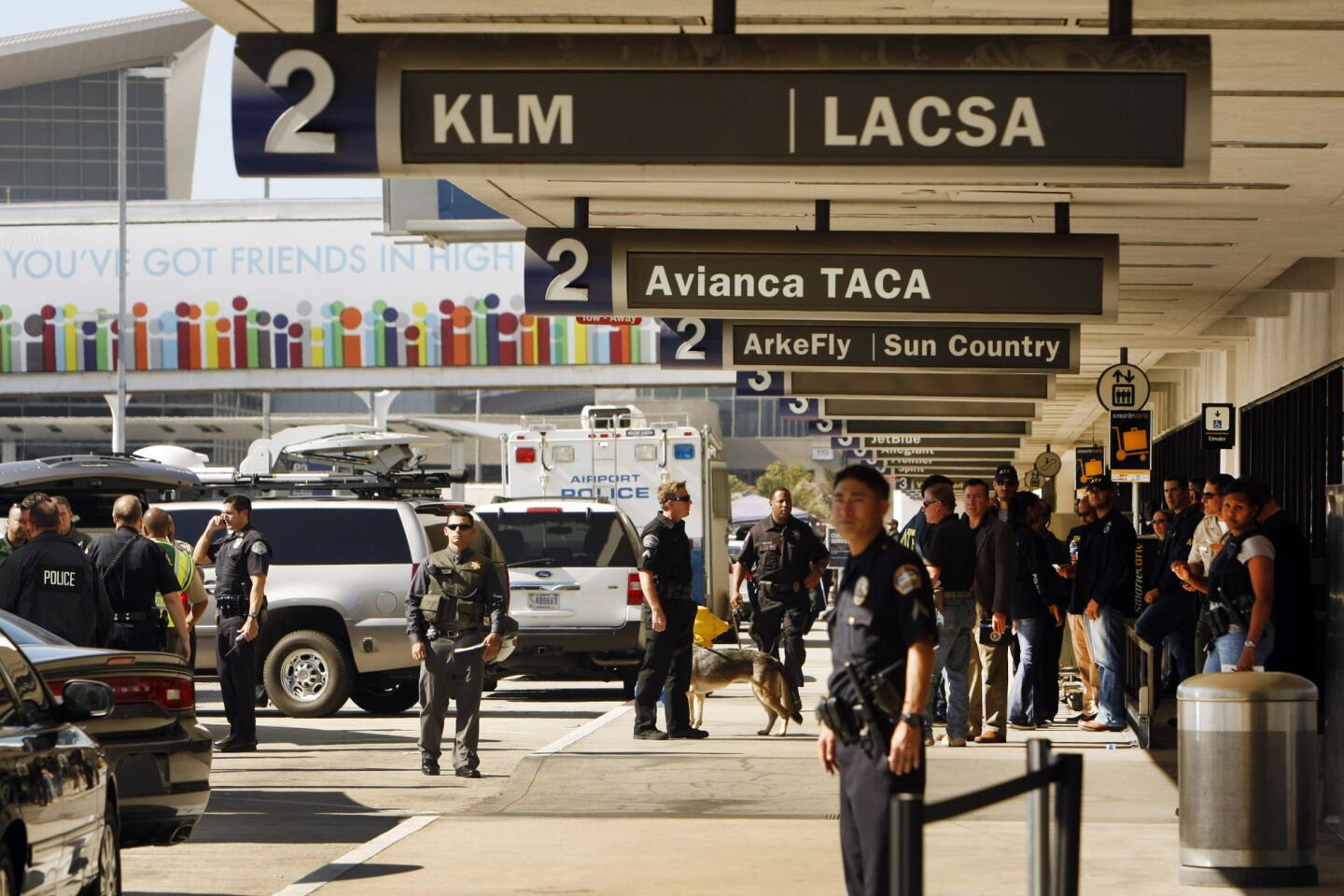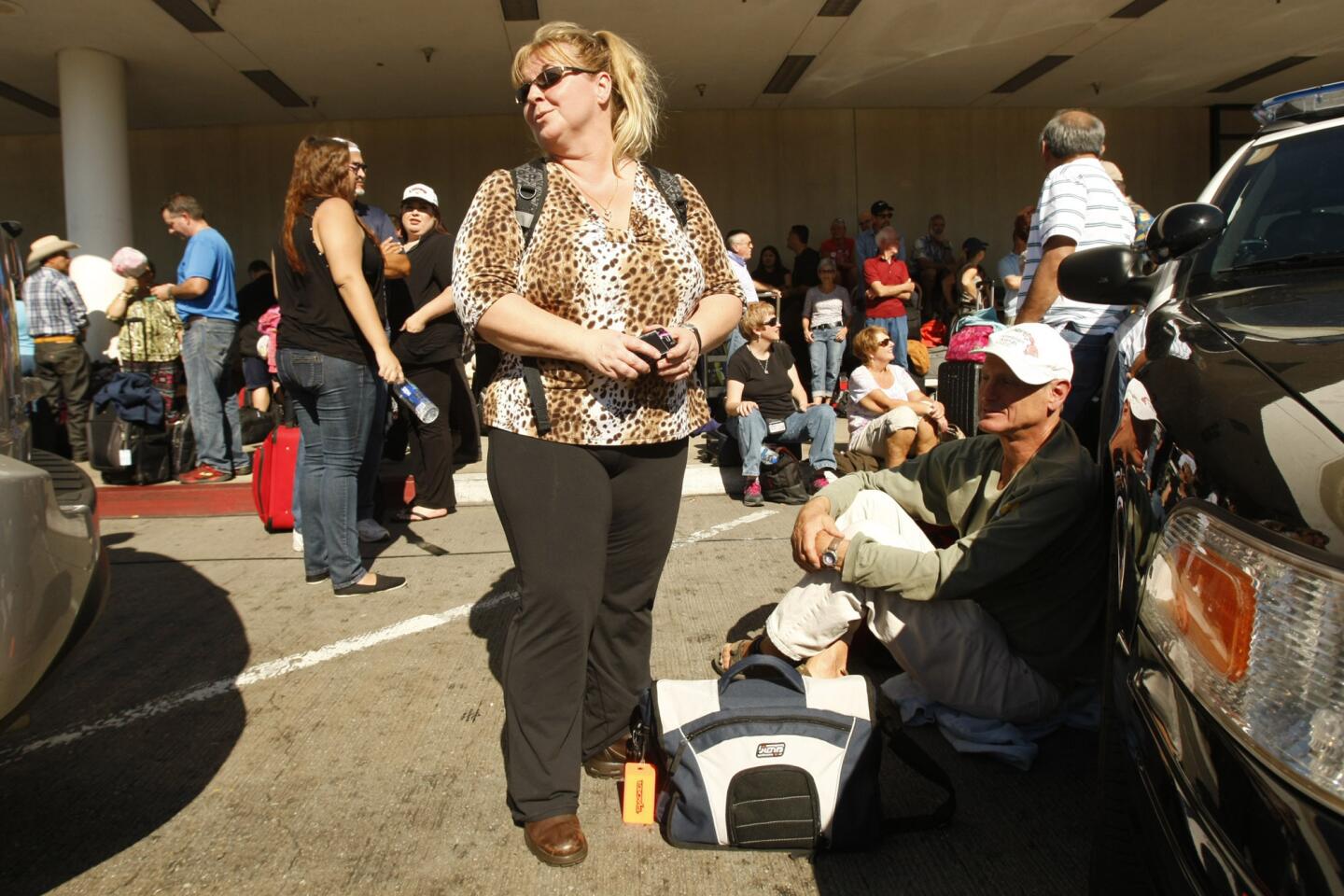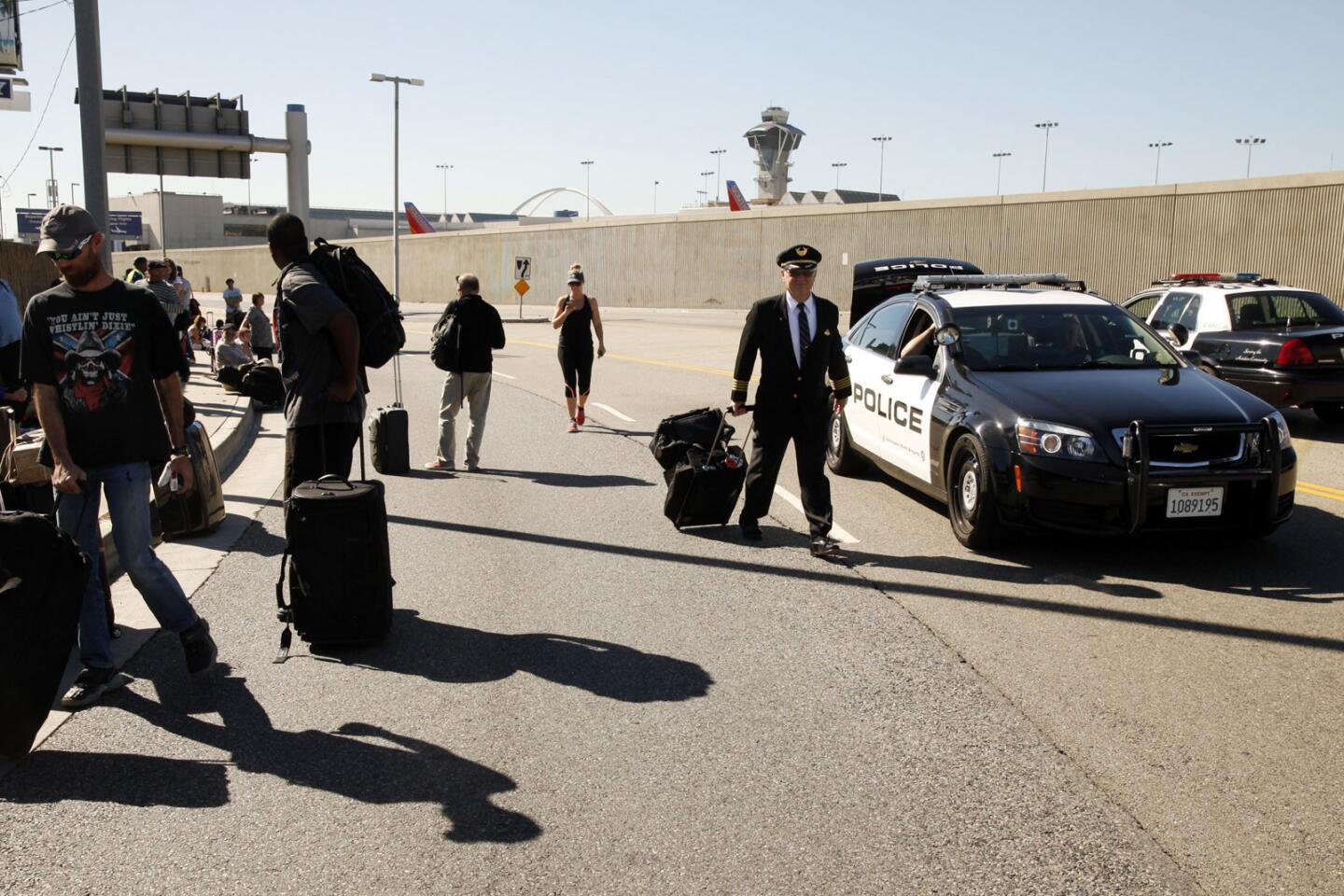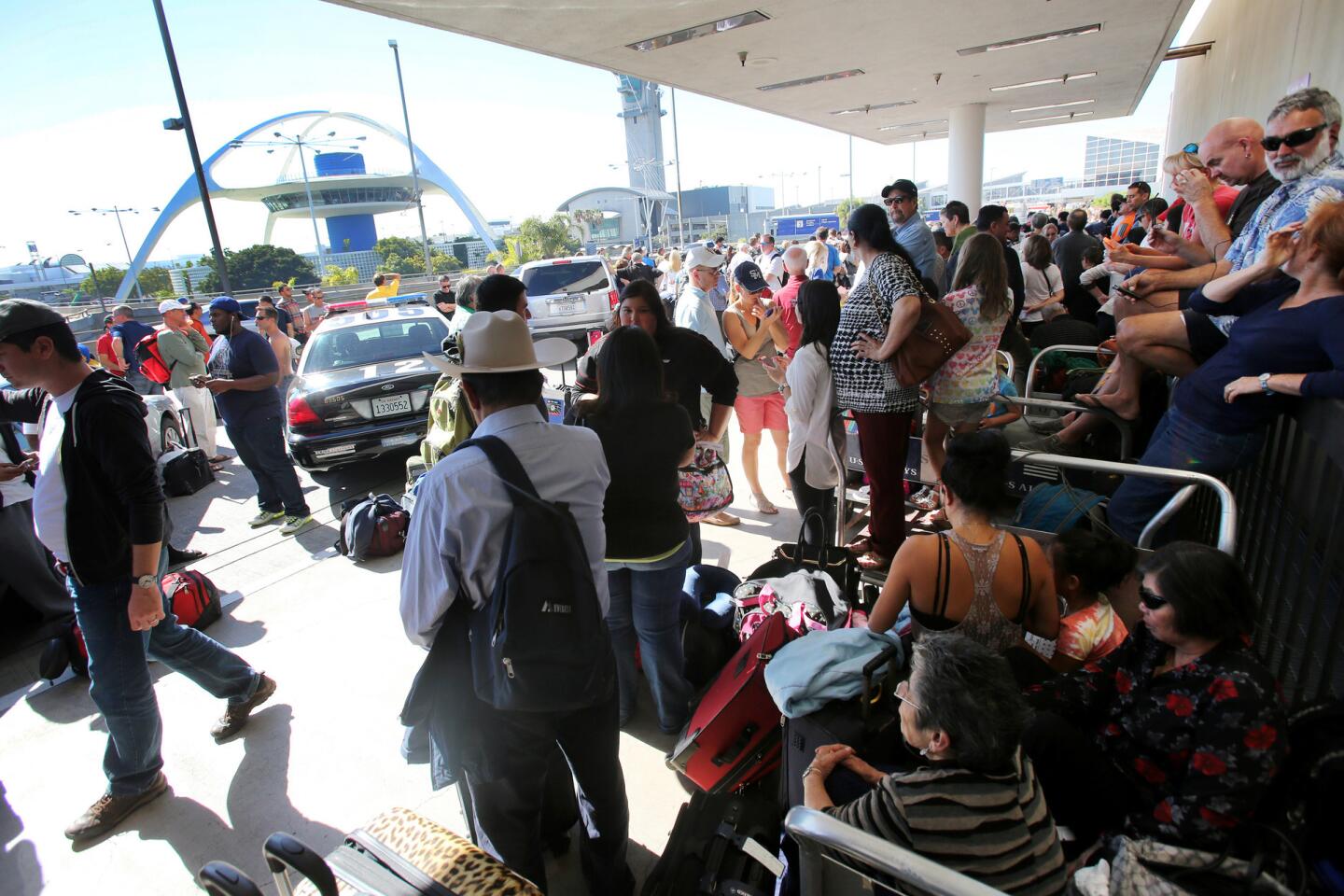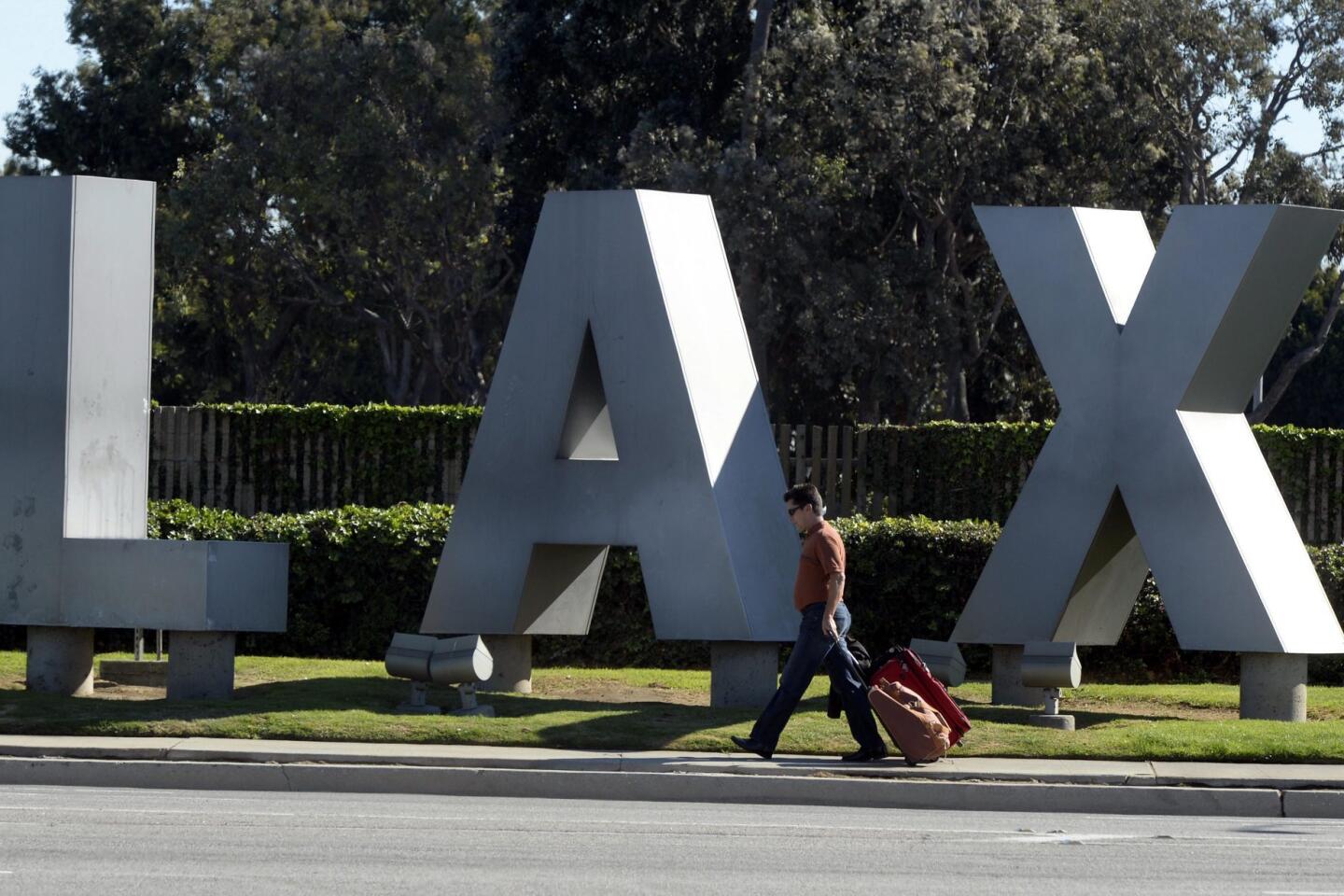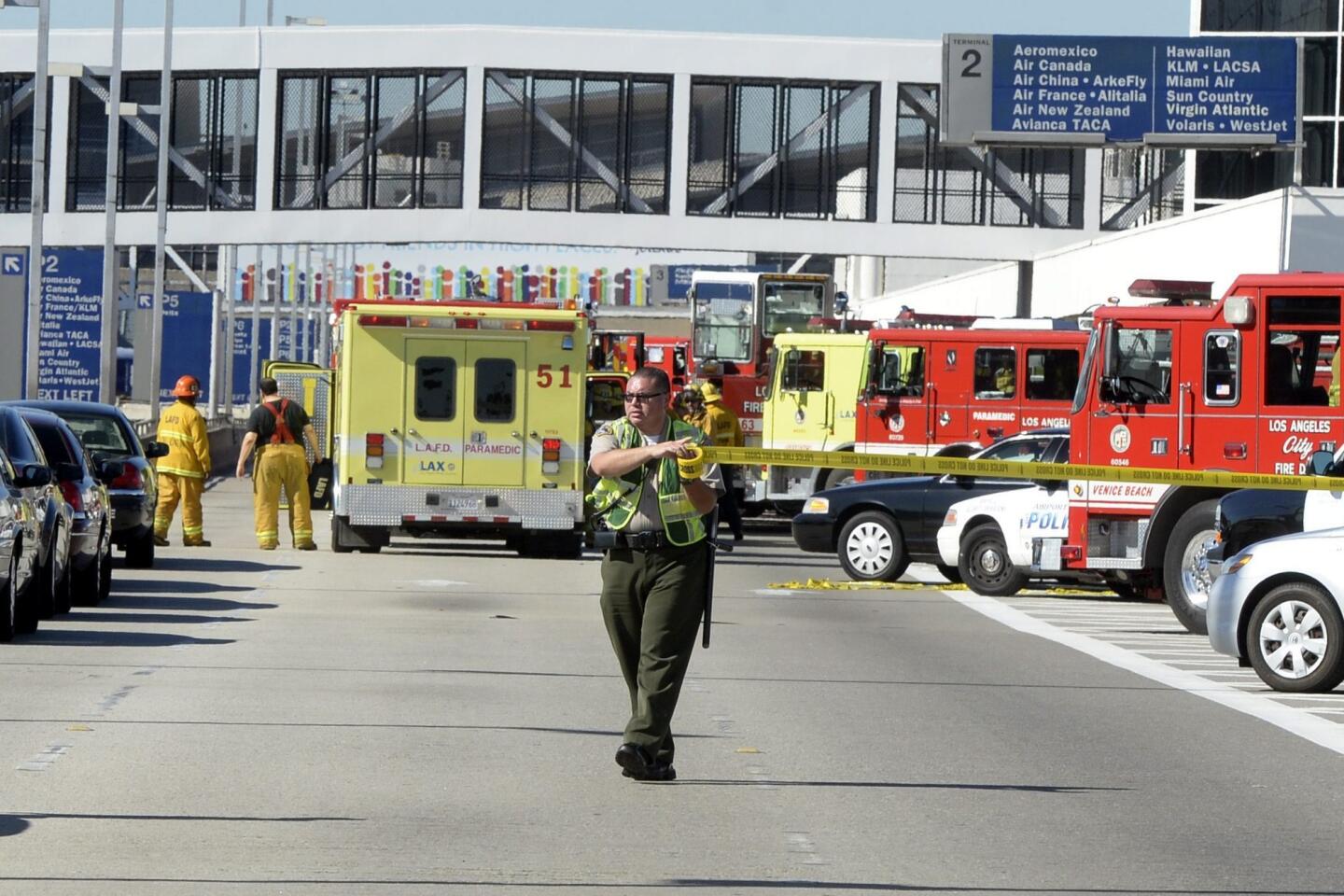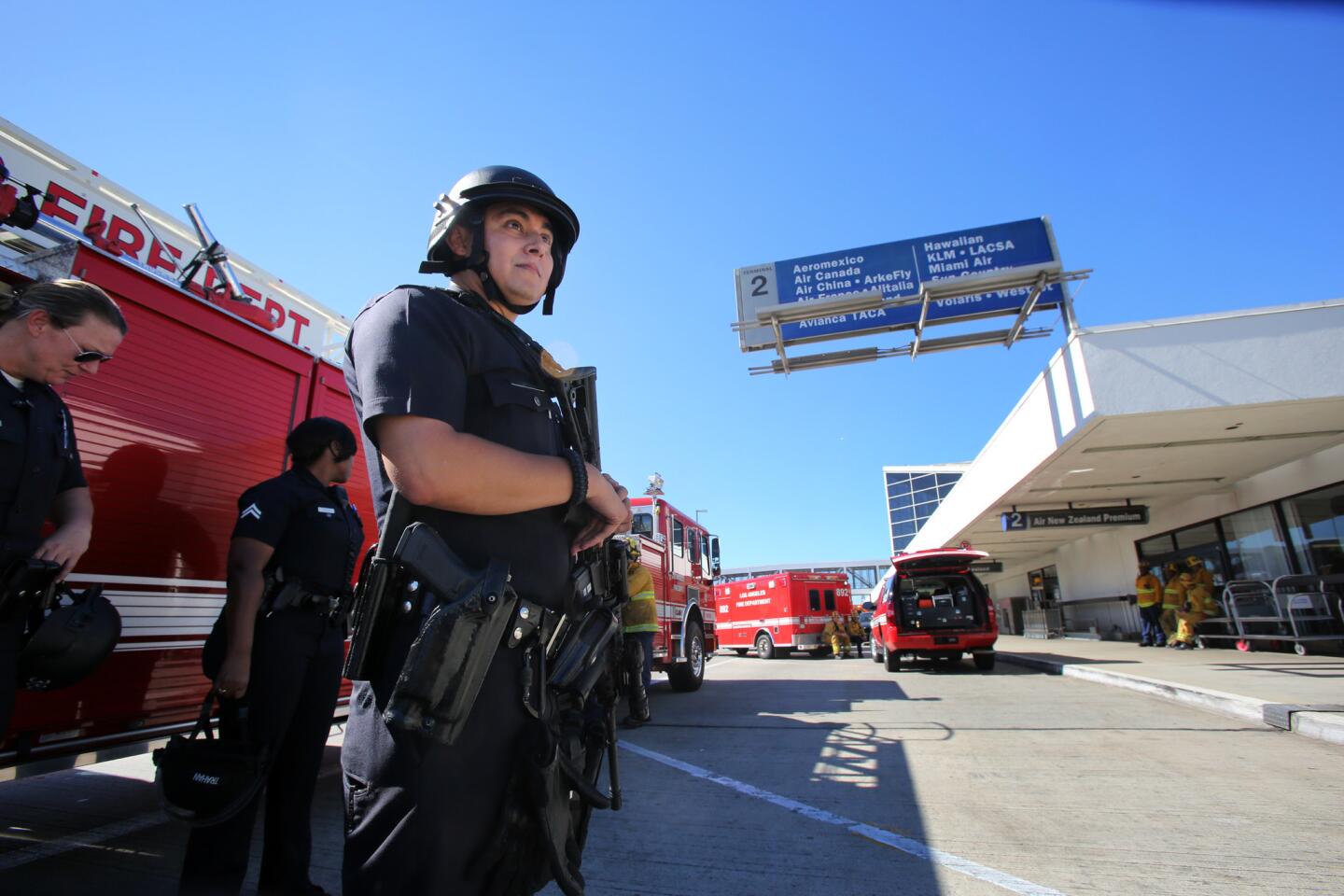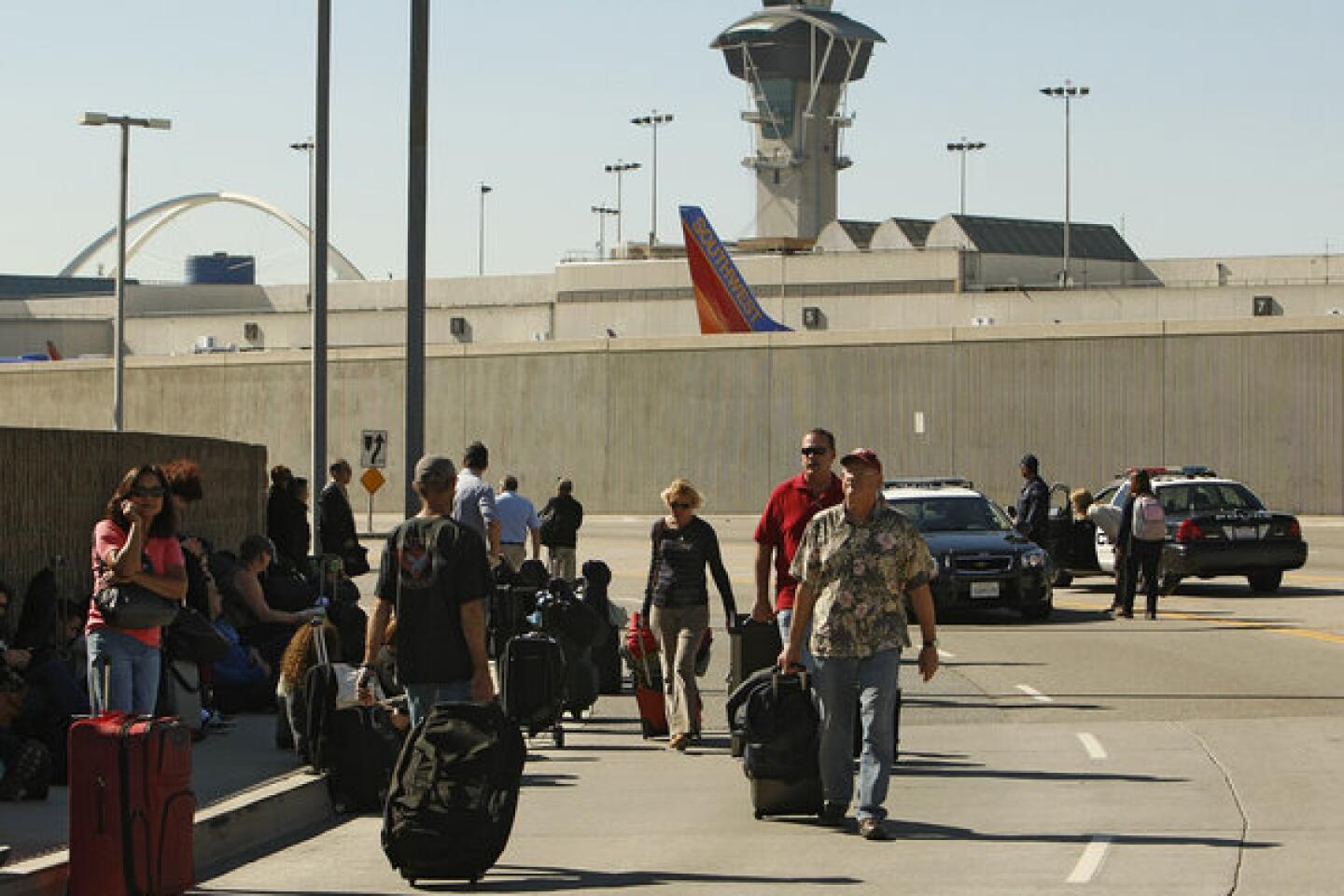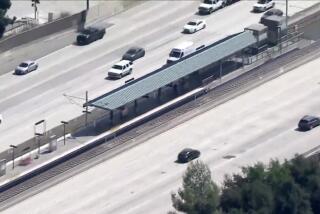LAX shooting: No decision yet on whether to seek death penalty
Federal prosecutors said this week that Atty. Gen. Eric Holder has not yet decided whether to seek the death penalty against Paul Ciancia, the man accused in the deadly shooting rampage at Los Angeles International Airport.
Ciancia, 23, has been charged with 11 counts -- including murder and attempted murder -- in the Nov. 1 attack that left Transportation Security Administration Officer Gerardo I. Hernandez dead and three other people wounded. He pleaded not guilty to the charges last month.
After two court appearances at the San Bernardino County jailhouse, where he is receiving medical care, Ciancia appeared for the first time Monday before a judge at the federal courthouse in downtown Los Angeles.
There, prosecutors told U.S. District Court Judge Philip Gutierrez that Holder had not decided on whether to seek the death penalty.
Thom Mrozek, a spokesman for the U.S. attorney’s office, told The Times that a “multistep review process” was underway that “culminates with the attorney general making the final decision on whether the government will seek the death penalty.”
That process, Mrozek added, “will likely take a number of months to complete.”
Ciancia was ordered to return to court March 3. He is being held without bail at the West Valley Detention Center in Rancho Cucamonga.
Ciancia, a New Jersey native who was living in Los Angeles at the time of the shooting, is accused of targeting TSA officers when he allegedly opened fire with a semiautomatic rifle in the airport’s Terminal 3 the morning of Nov. 1.
Investigators said they found a note signed by Ciancia saying he wanted to kill TSA agents and “instill fear in their traitorous minds.” Witnesses to the shooting said the gunman asked whether they worked for the TSA before moving on.
Hernandez, 39, was the first TSA officer killed in the line of duty since the agency was created after the Sept. 11, 2001, terrorist attacks.
Ciancia, who was shot in the head and leg during a gun battle with airport police, spent more than two weeks at Ronald Reagan UCLA Medical Center before he was released into the custody of the U.S. Marshals Service. Those in attendance of Monday’s court hearing said he still had a bandage on his neck.
[For the Record, 4:17 p.m. PST, Jan. 28: A previous version of this post incorrectly stated the agency was created after the Sept. 11, 2011, terrorist attacks. It should have said Sept. 11, 2001.]
Twitter: @katemather | Google+
More to Read
Sign up for Essential California
The most important California stories and recommendations in your inbox every morning.
You may occasionally receive promotional content from the Los Angeles Times.
